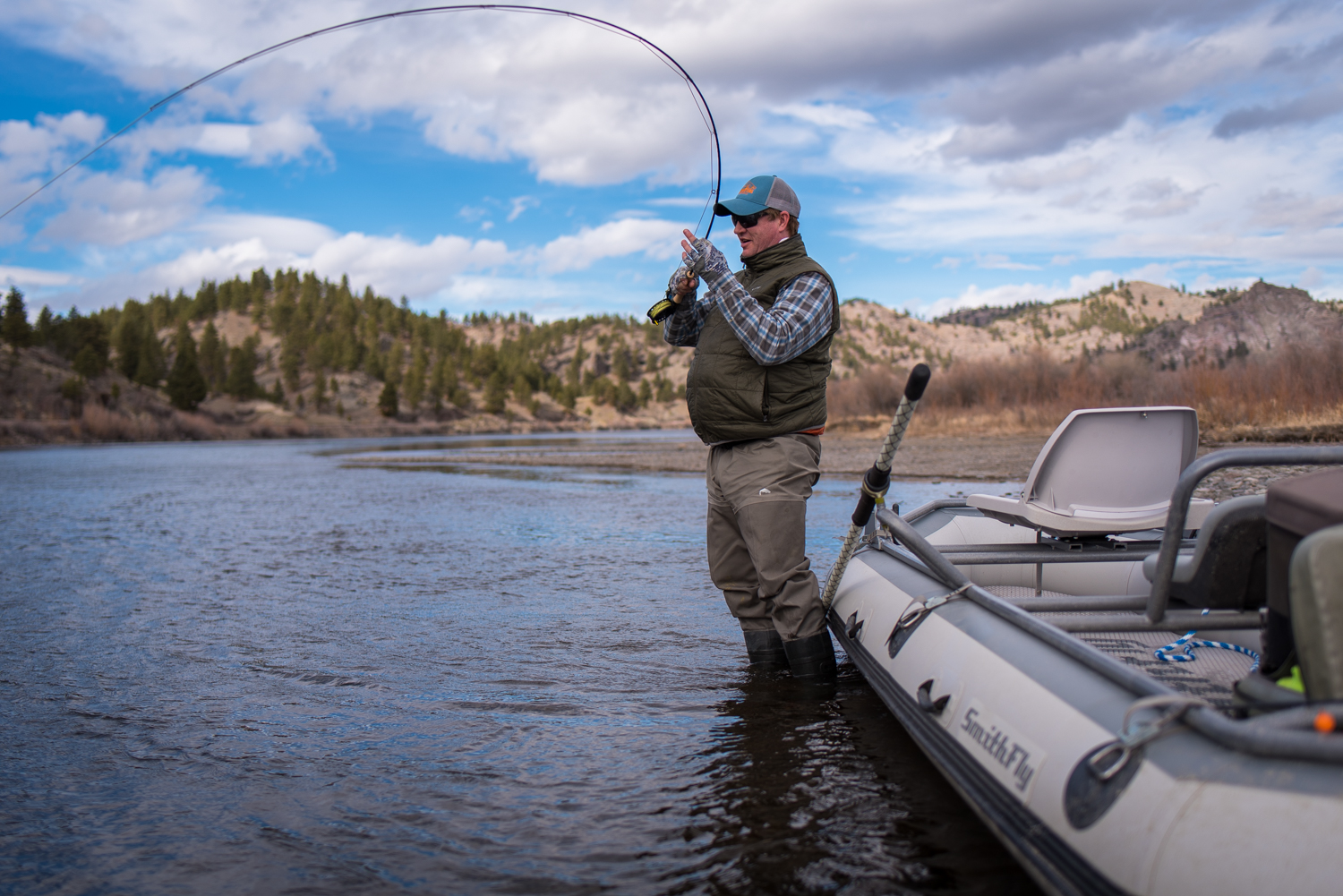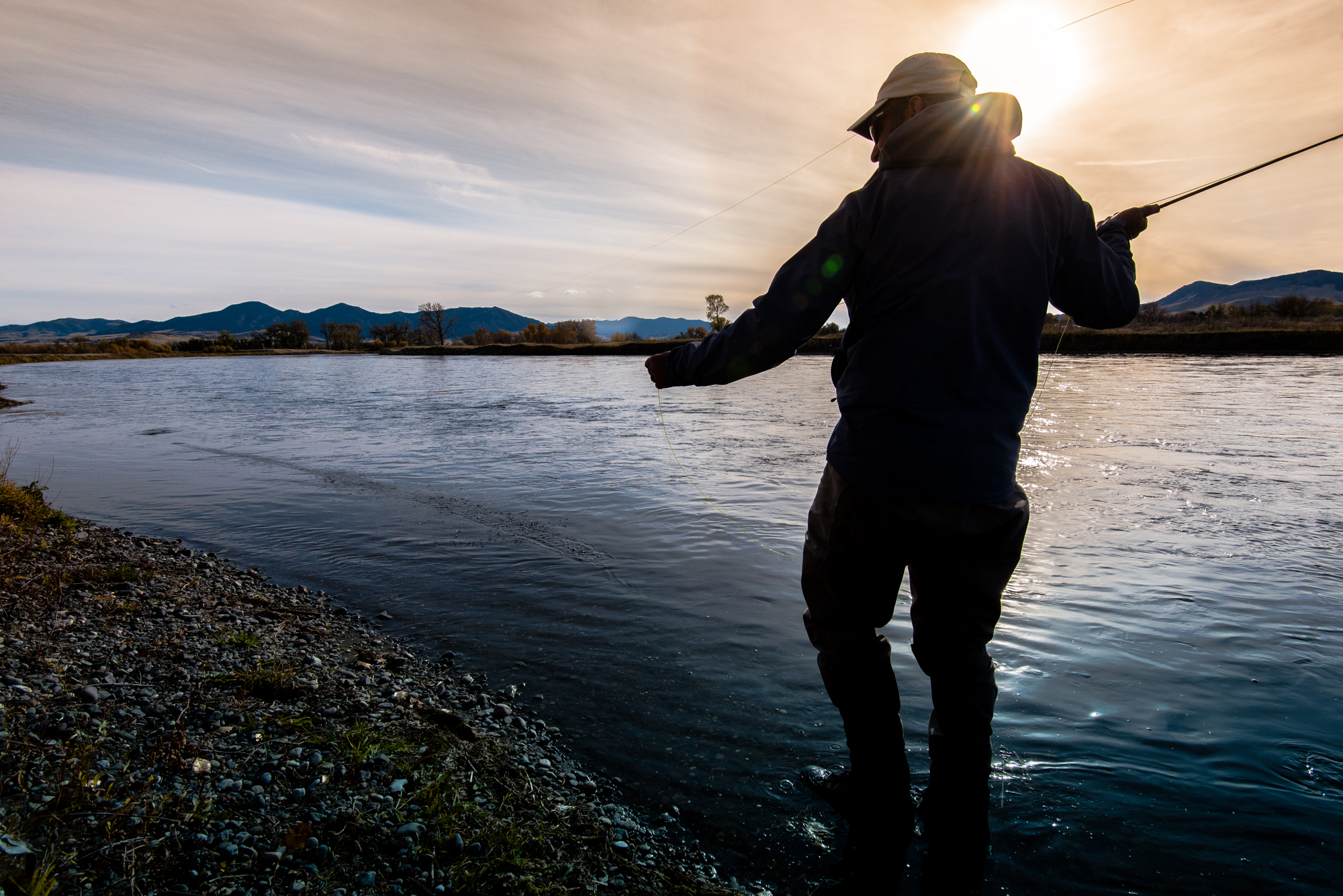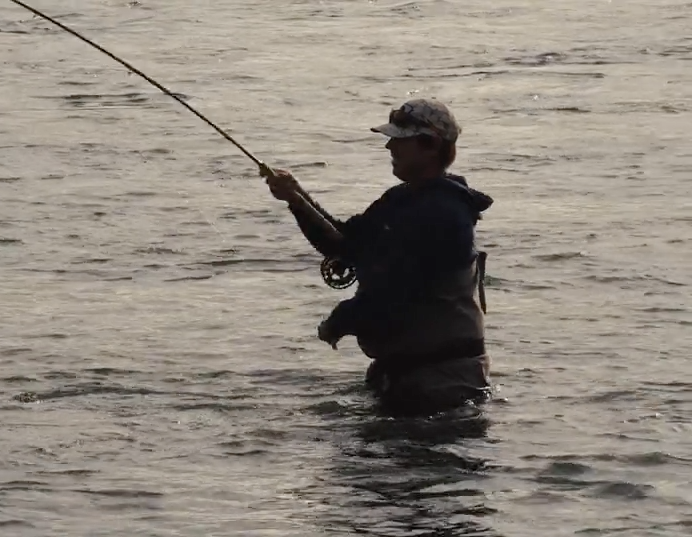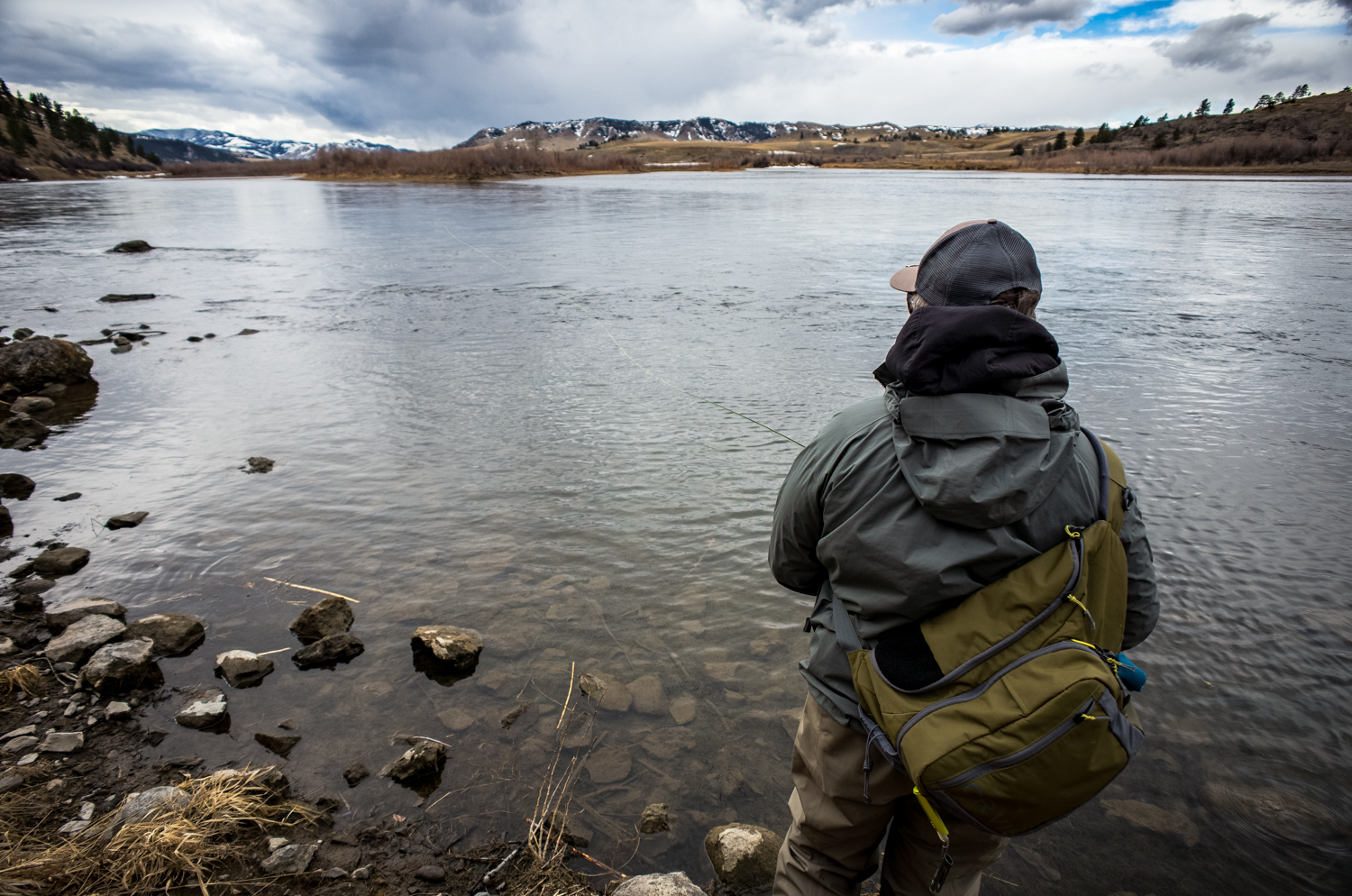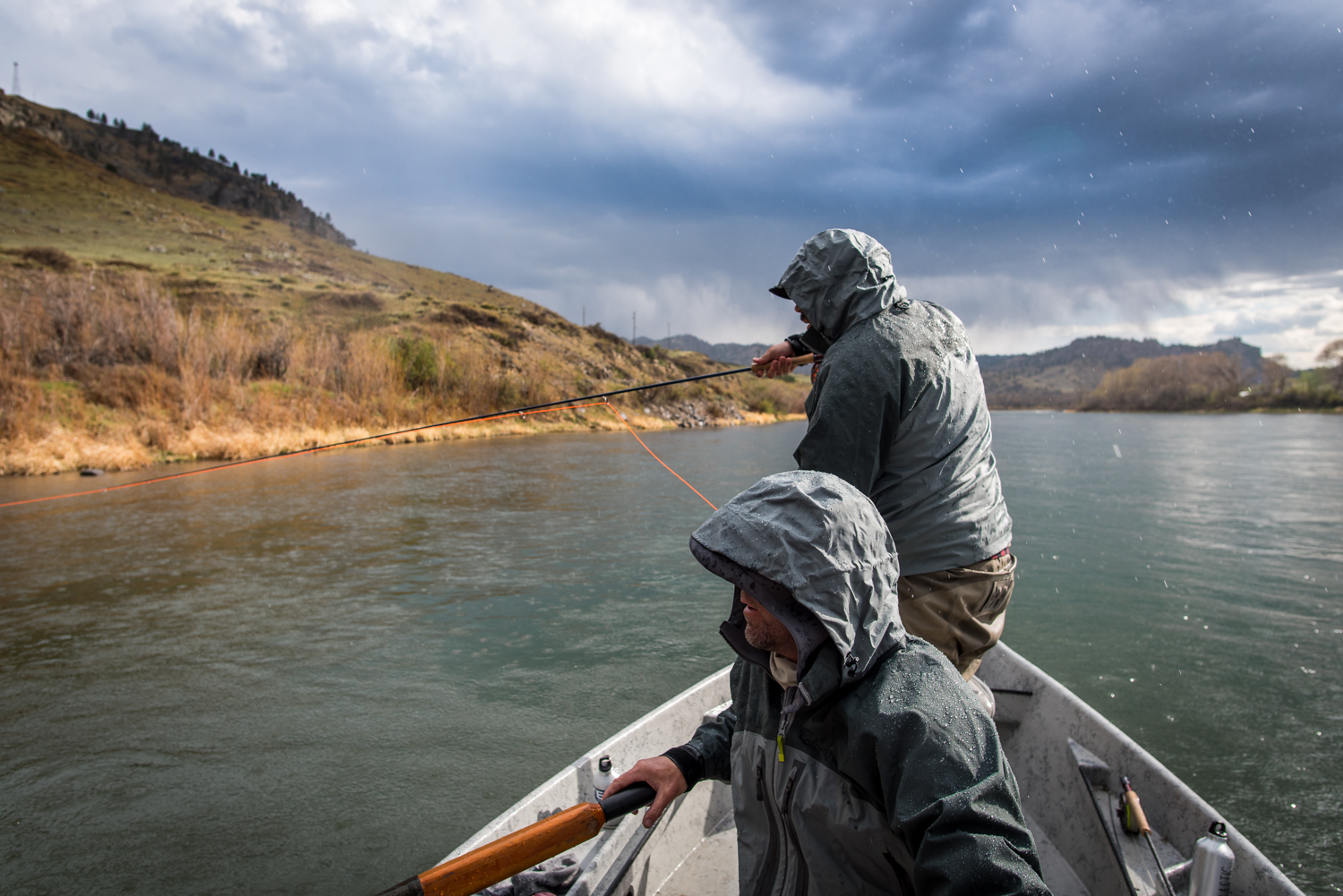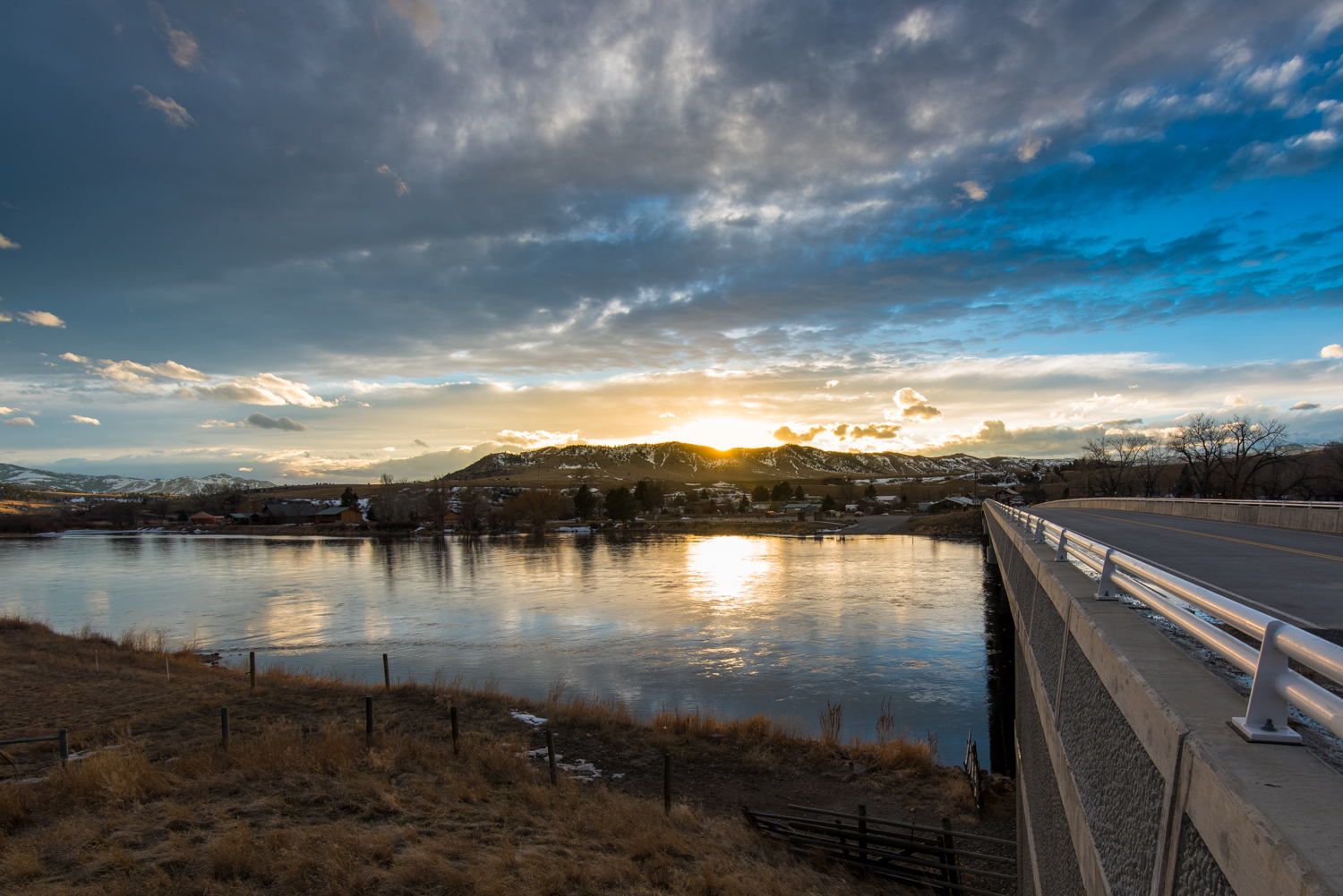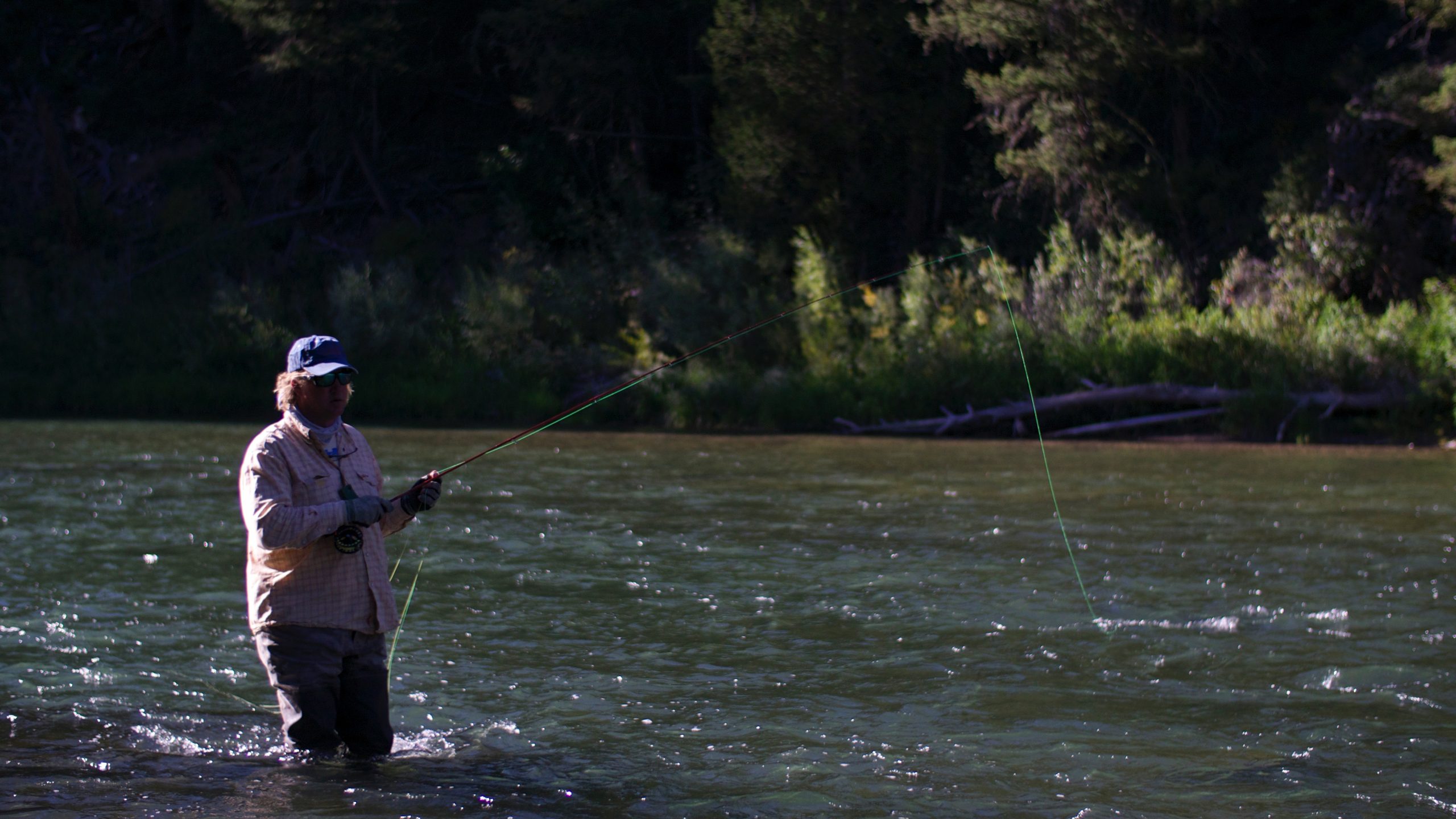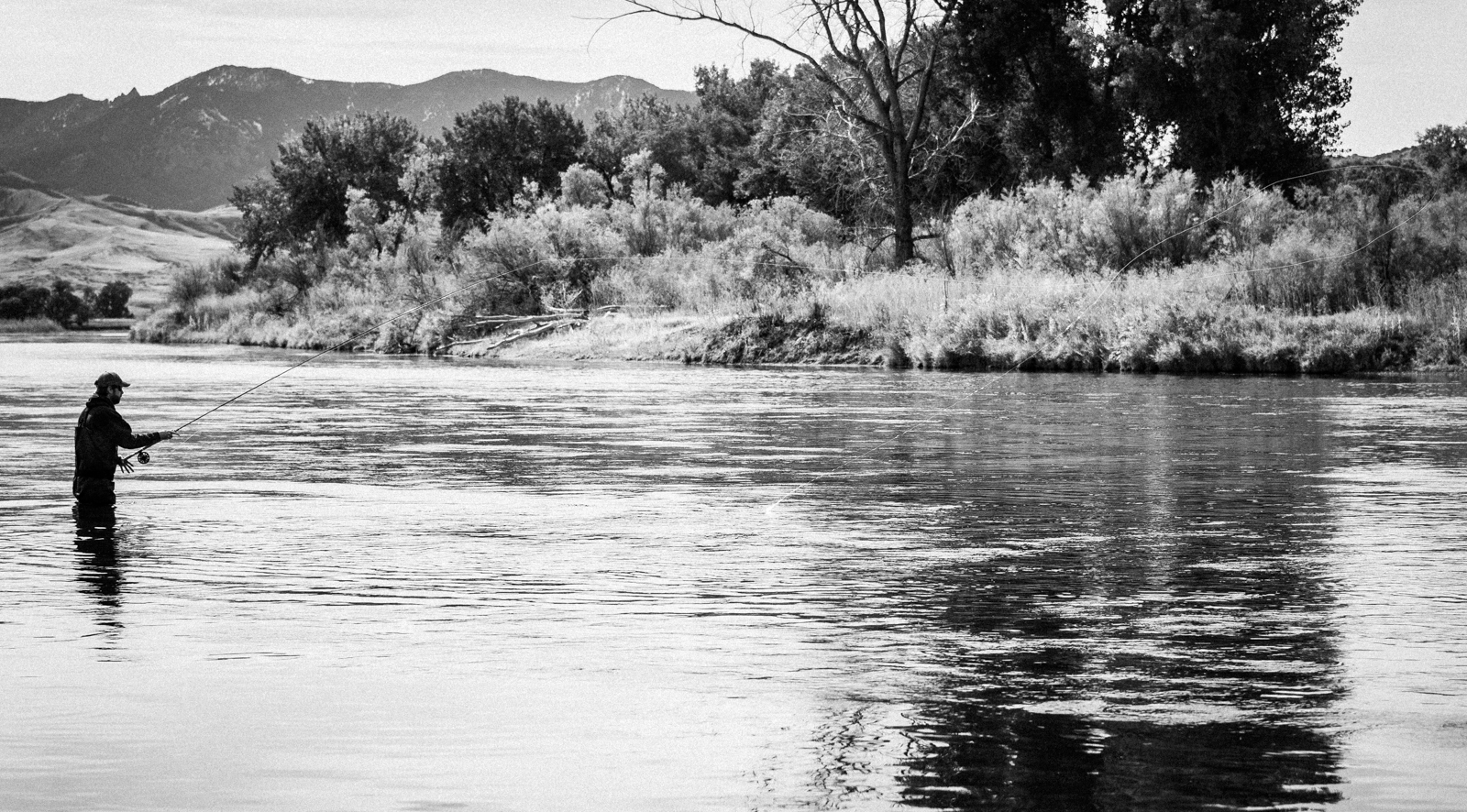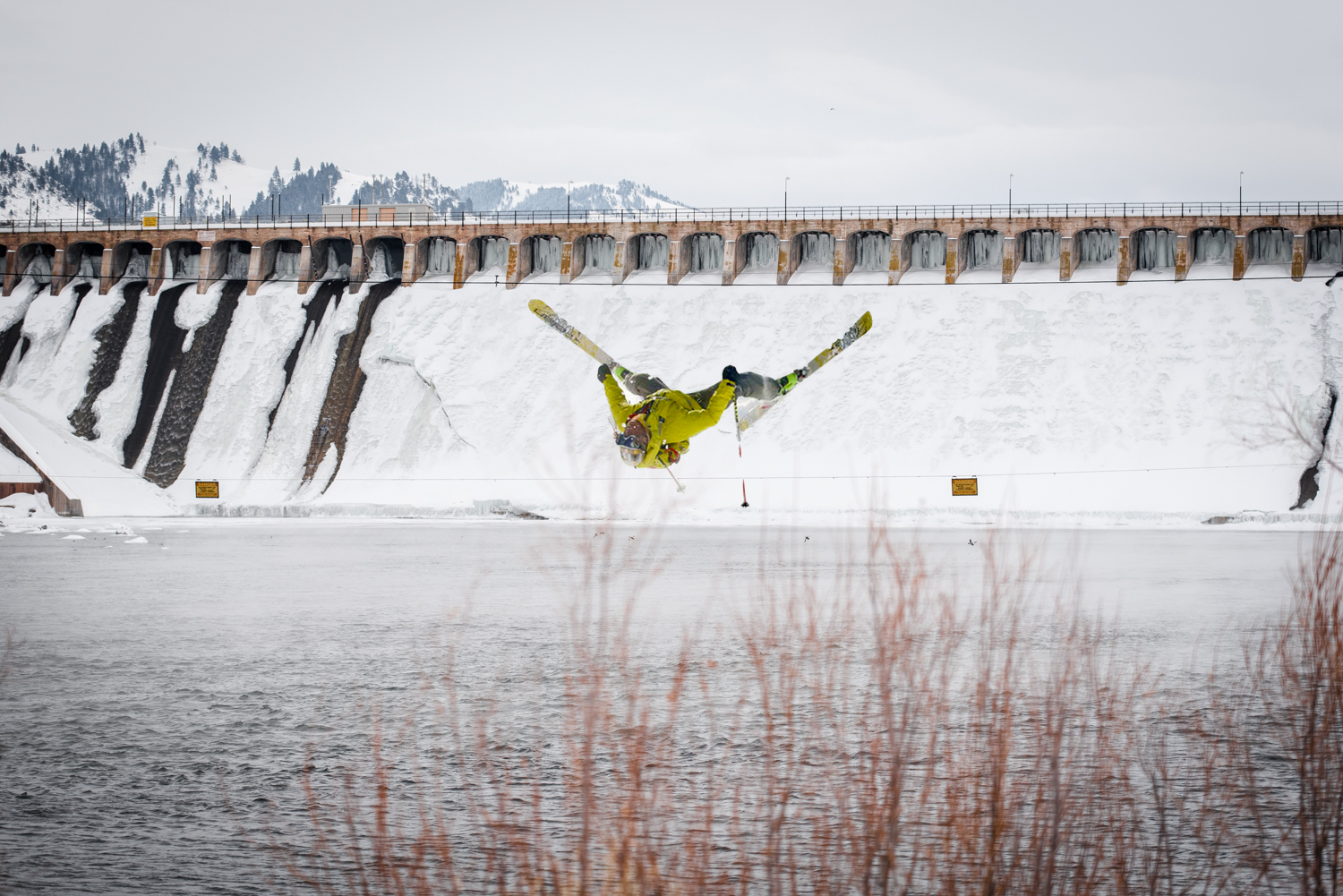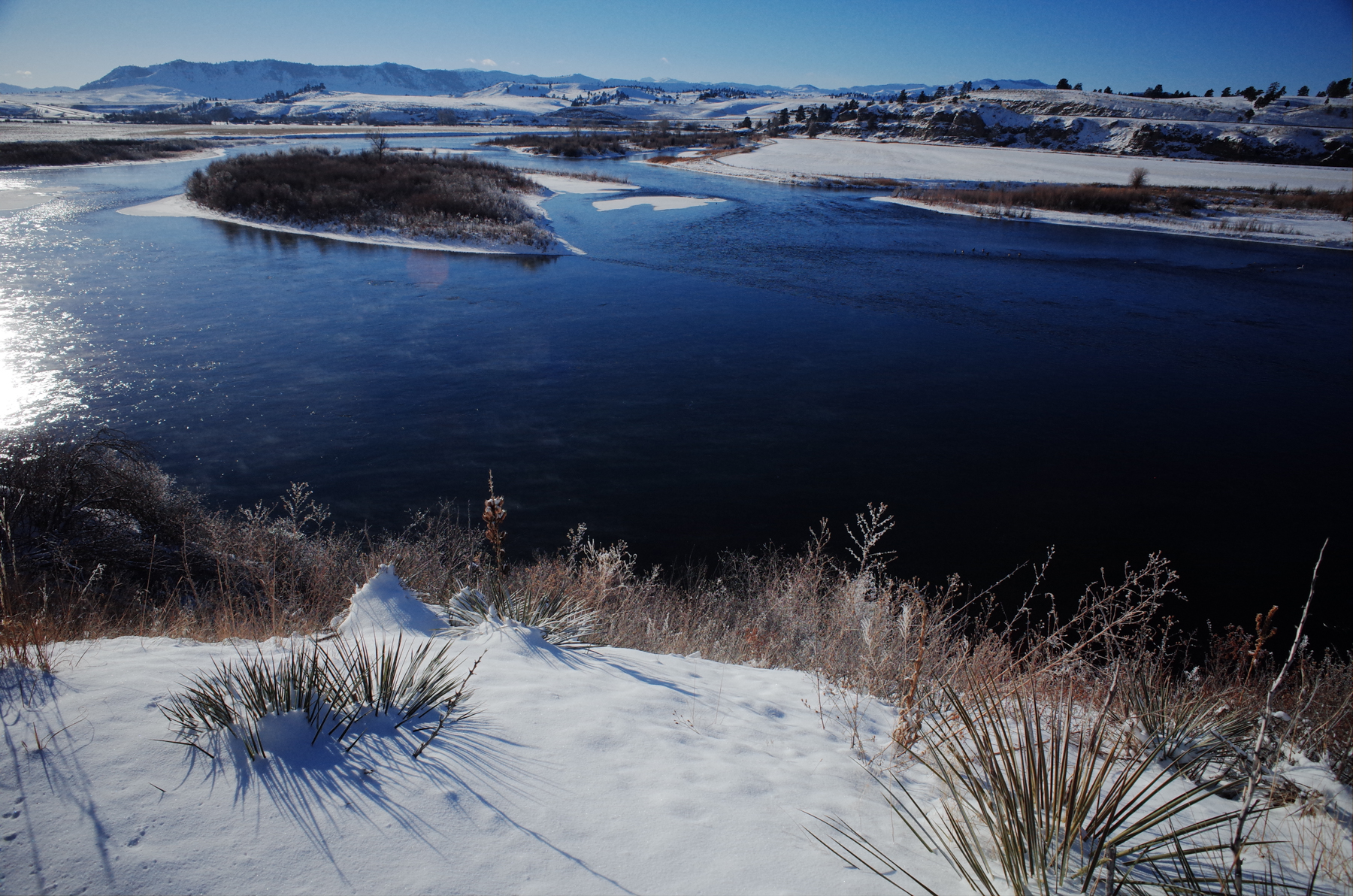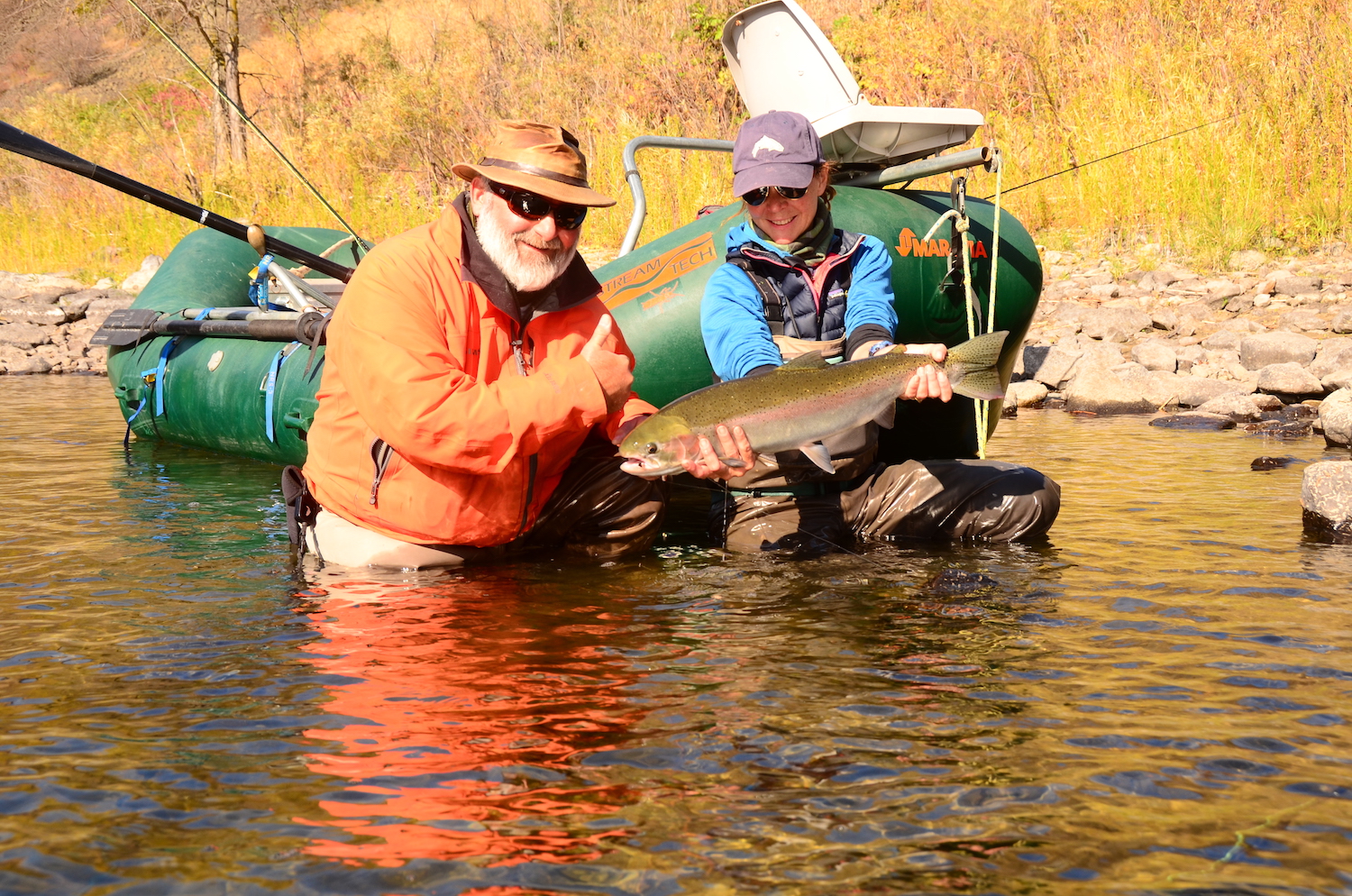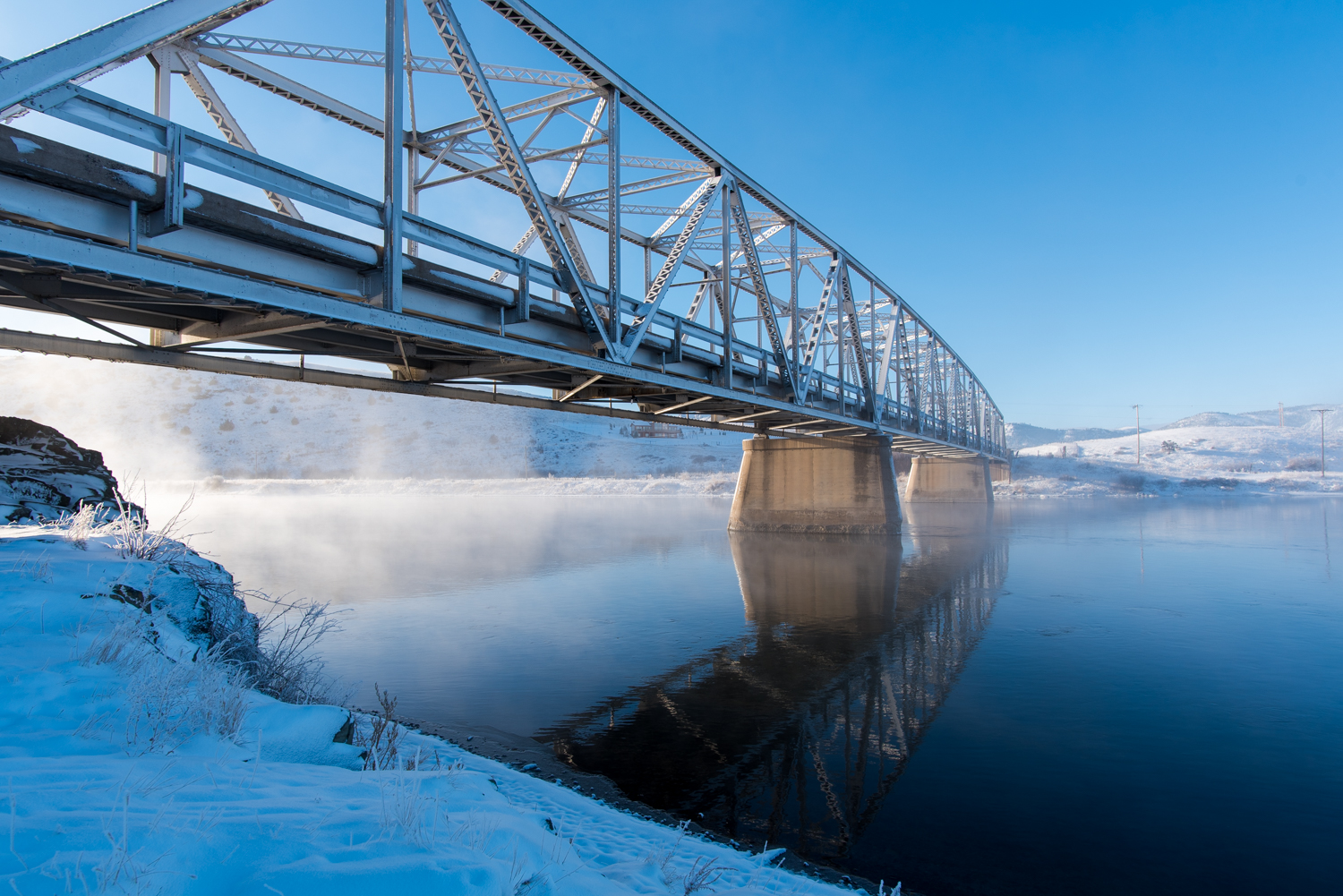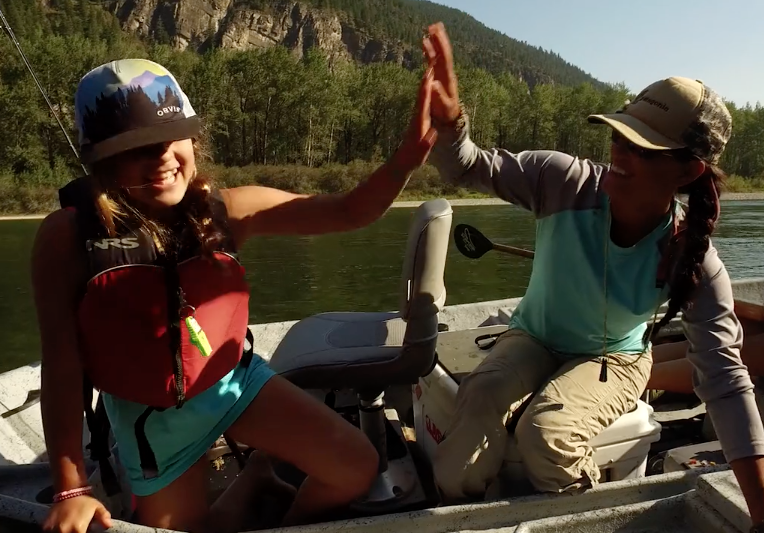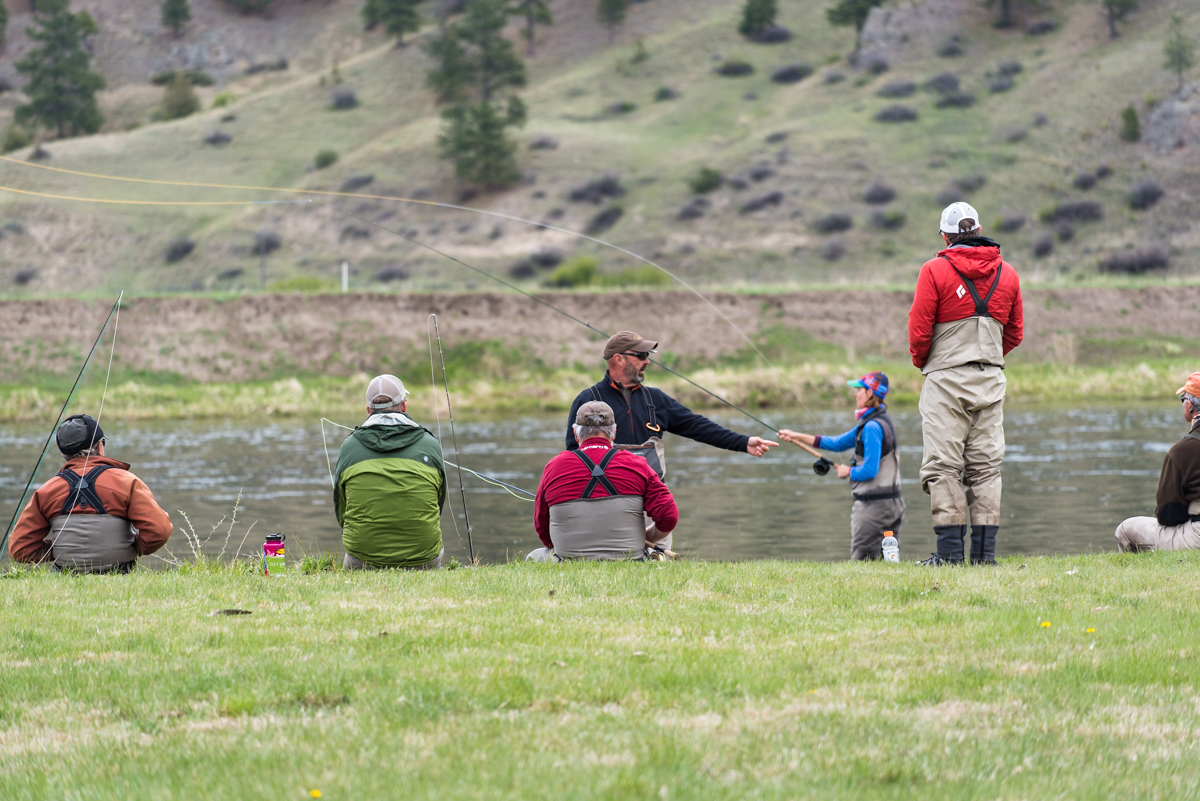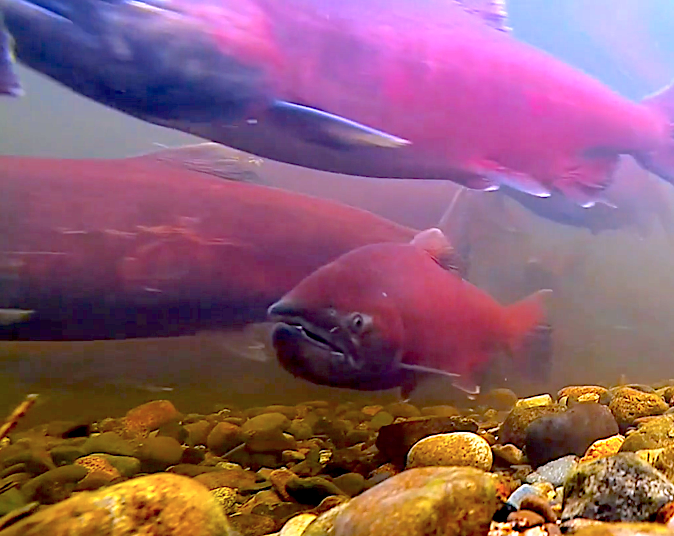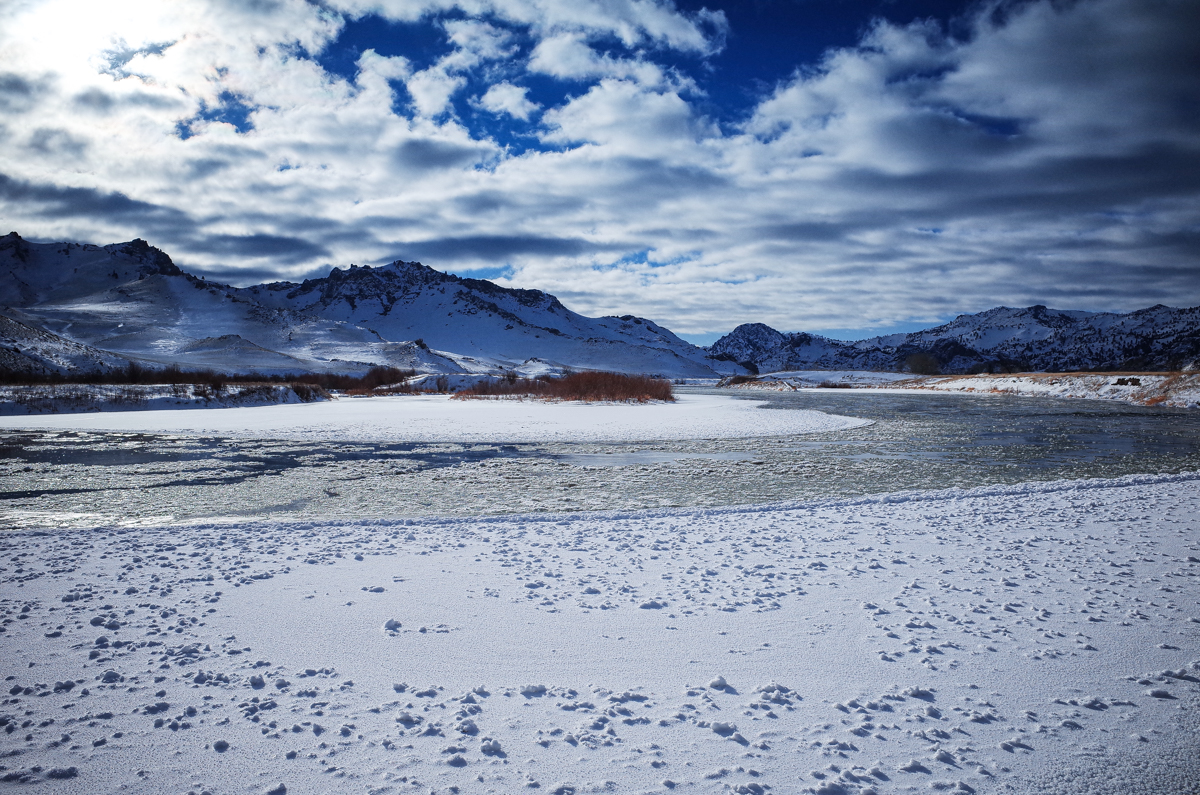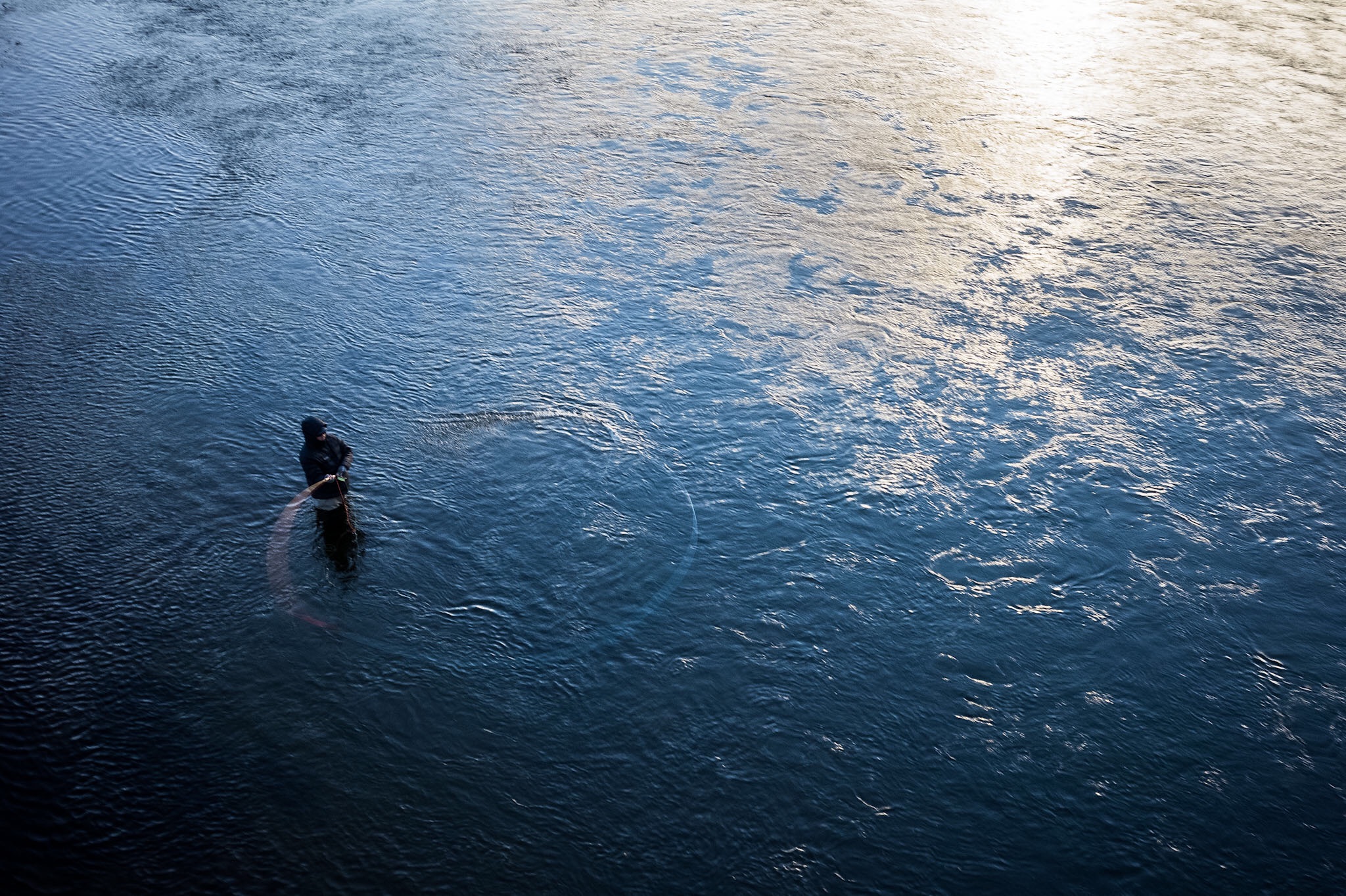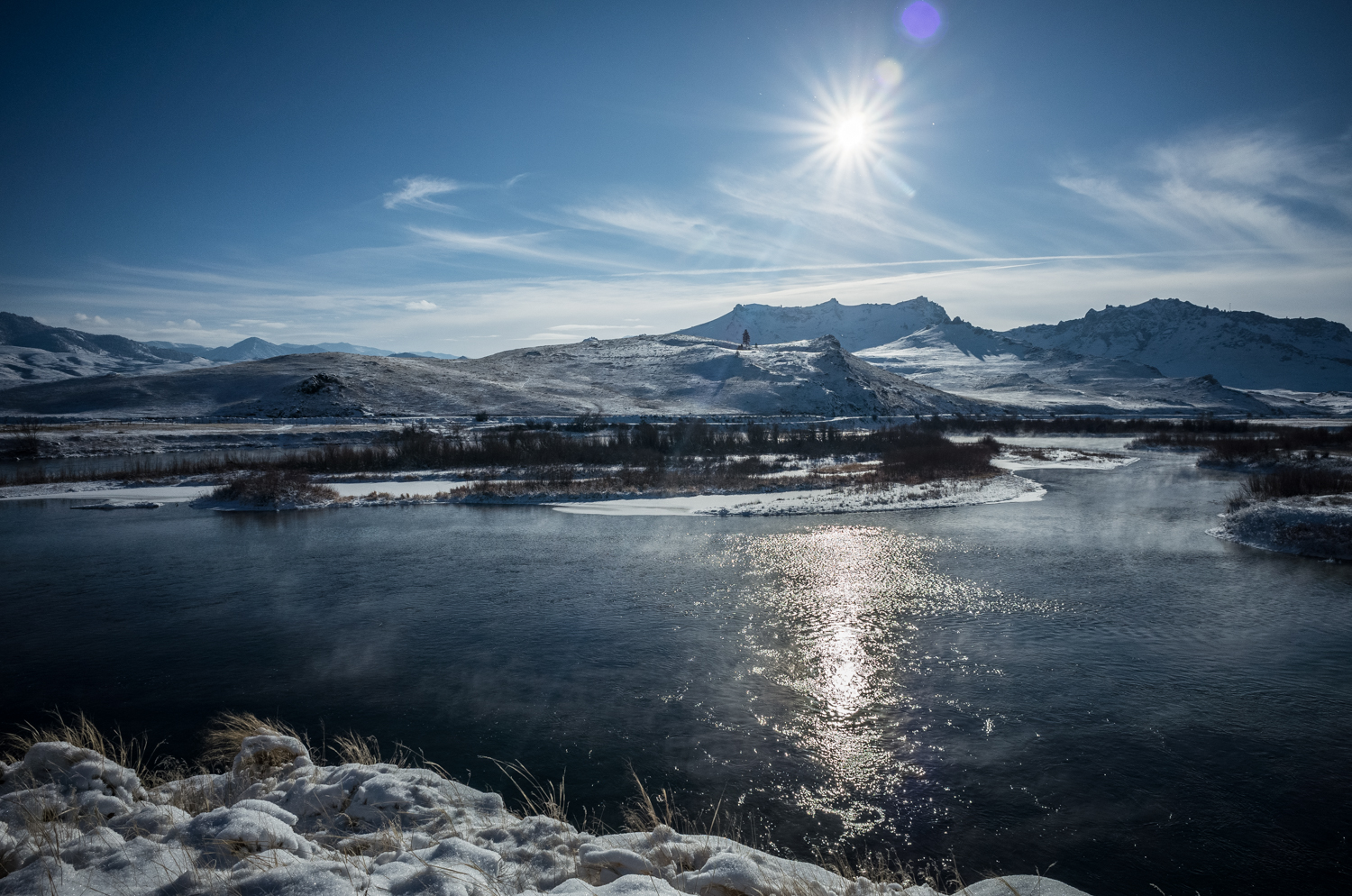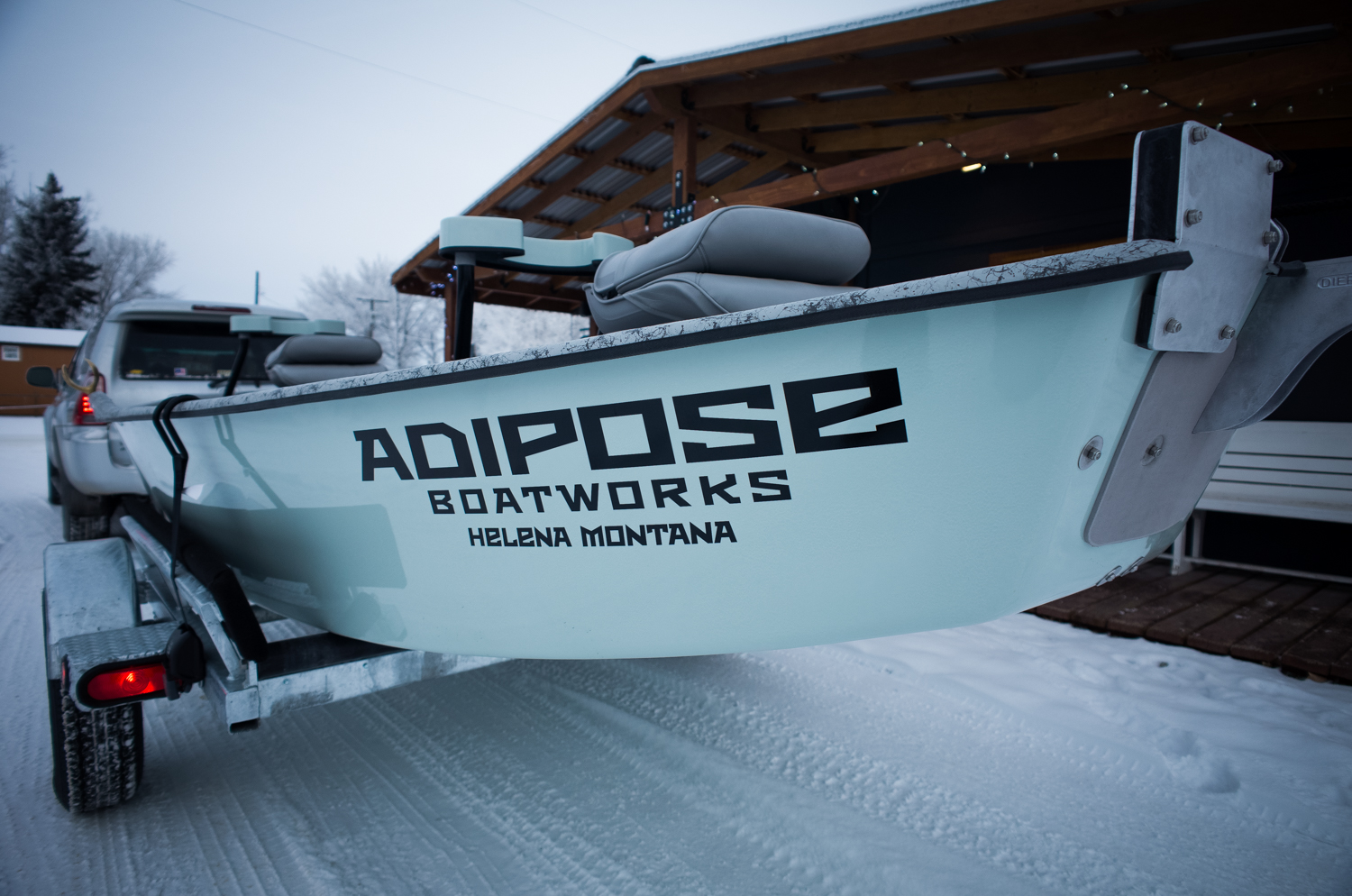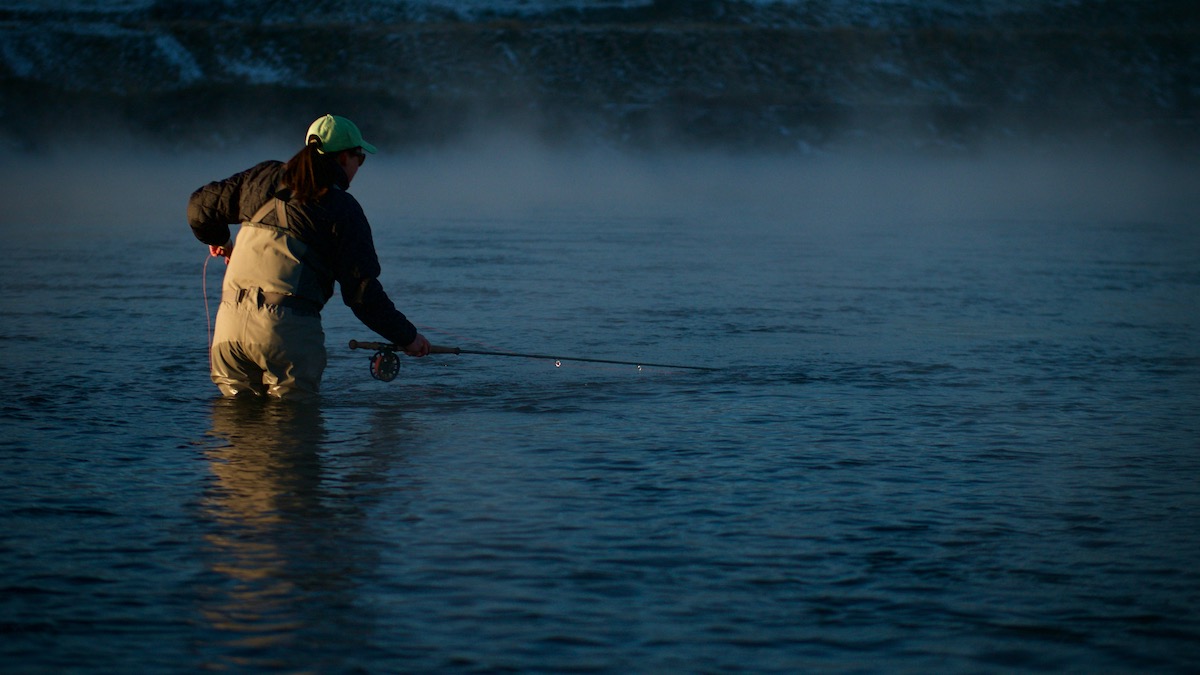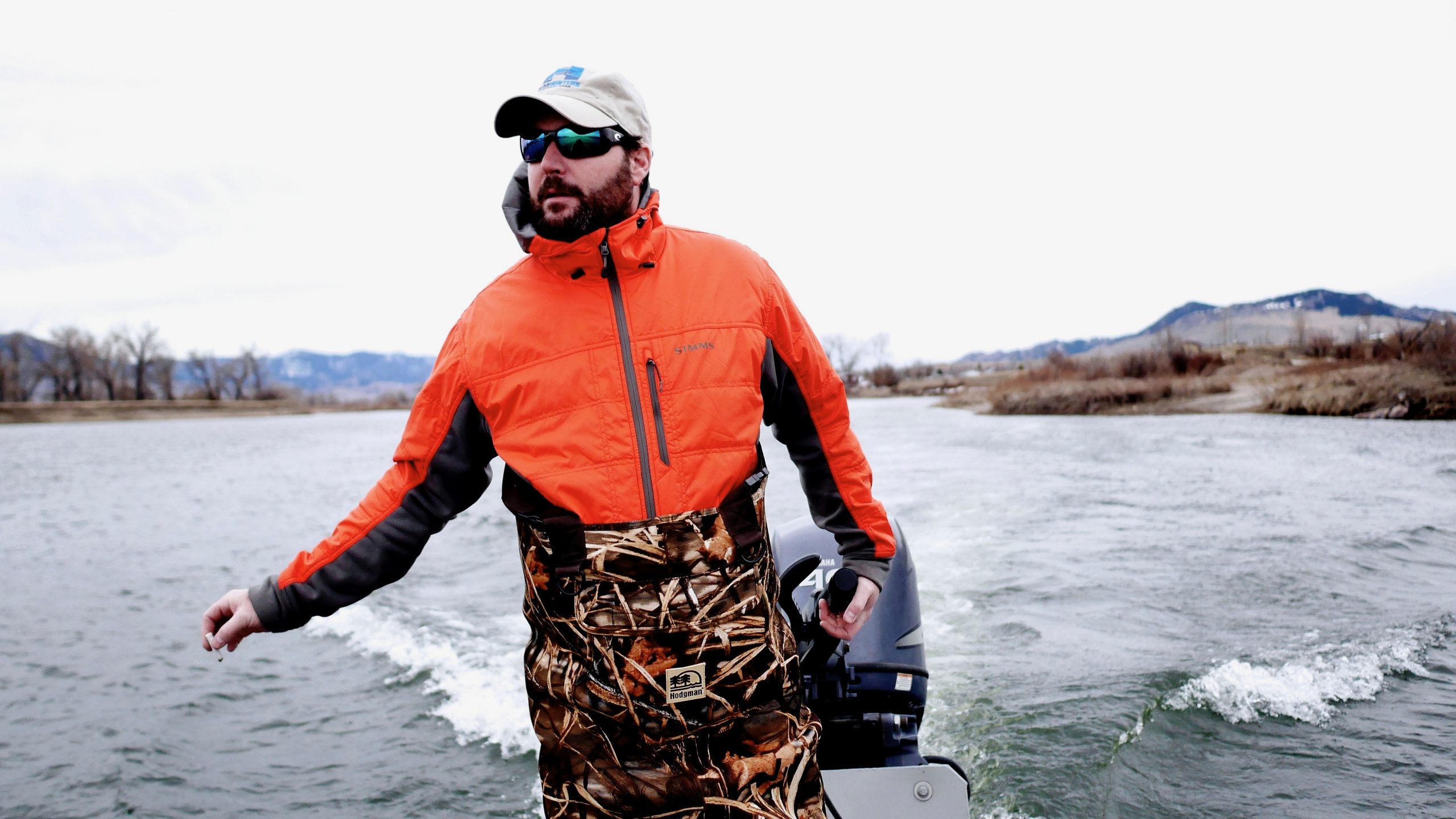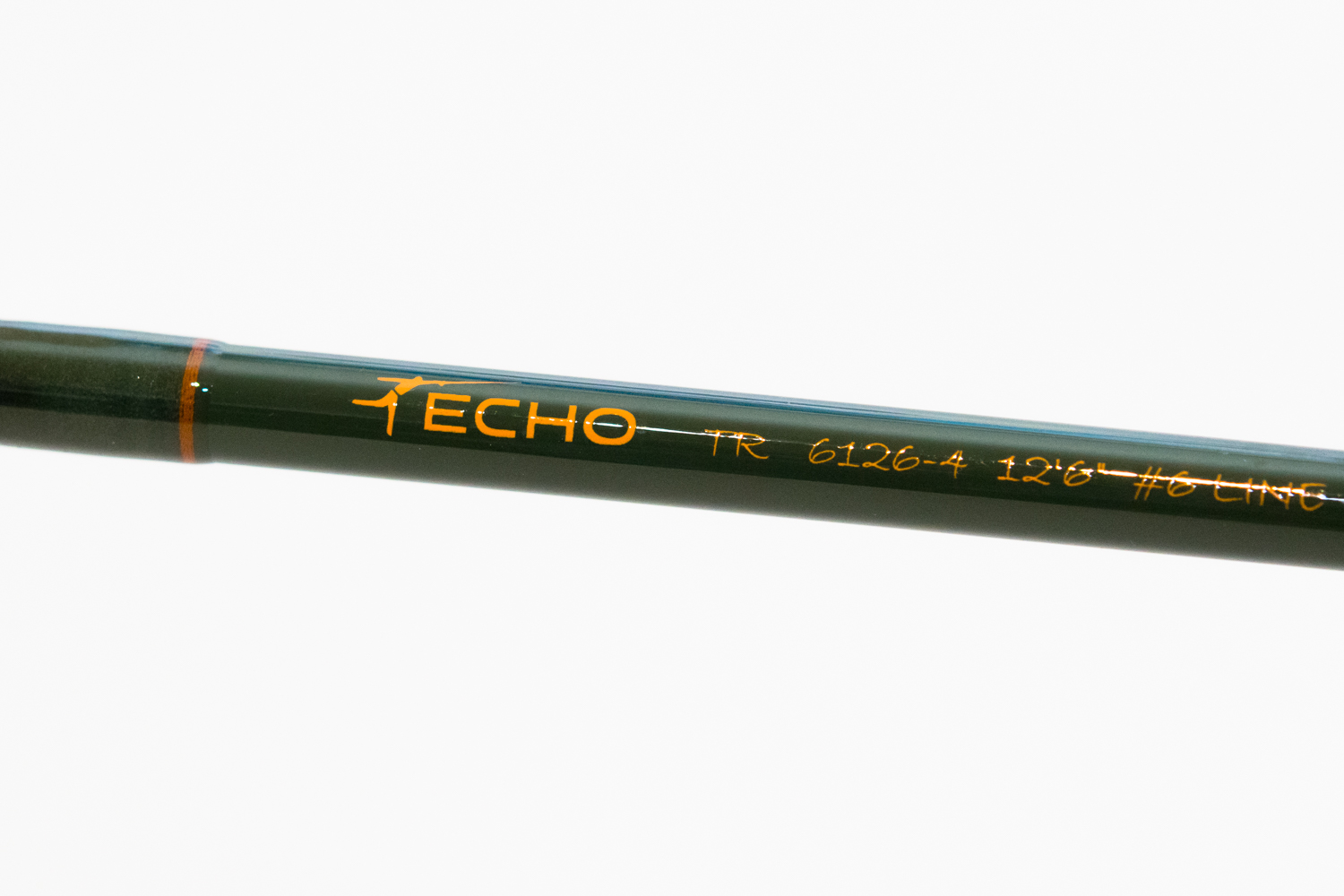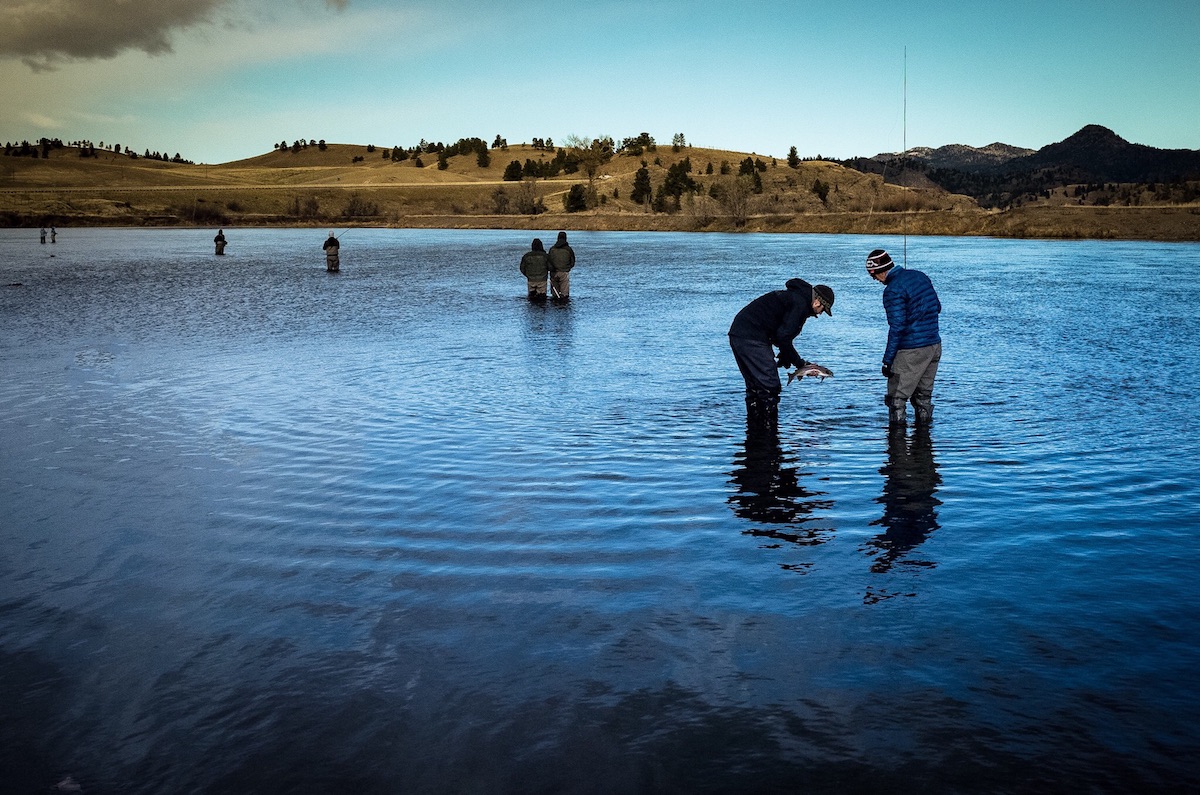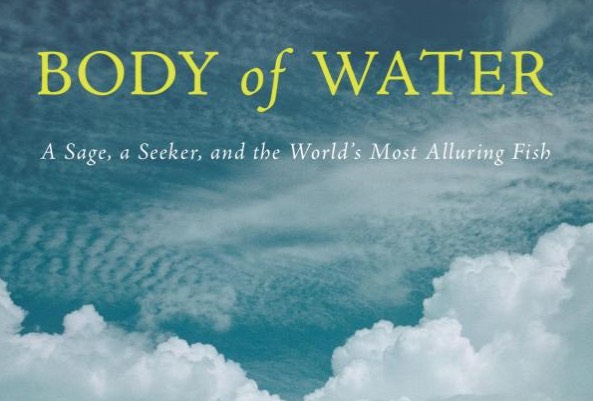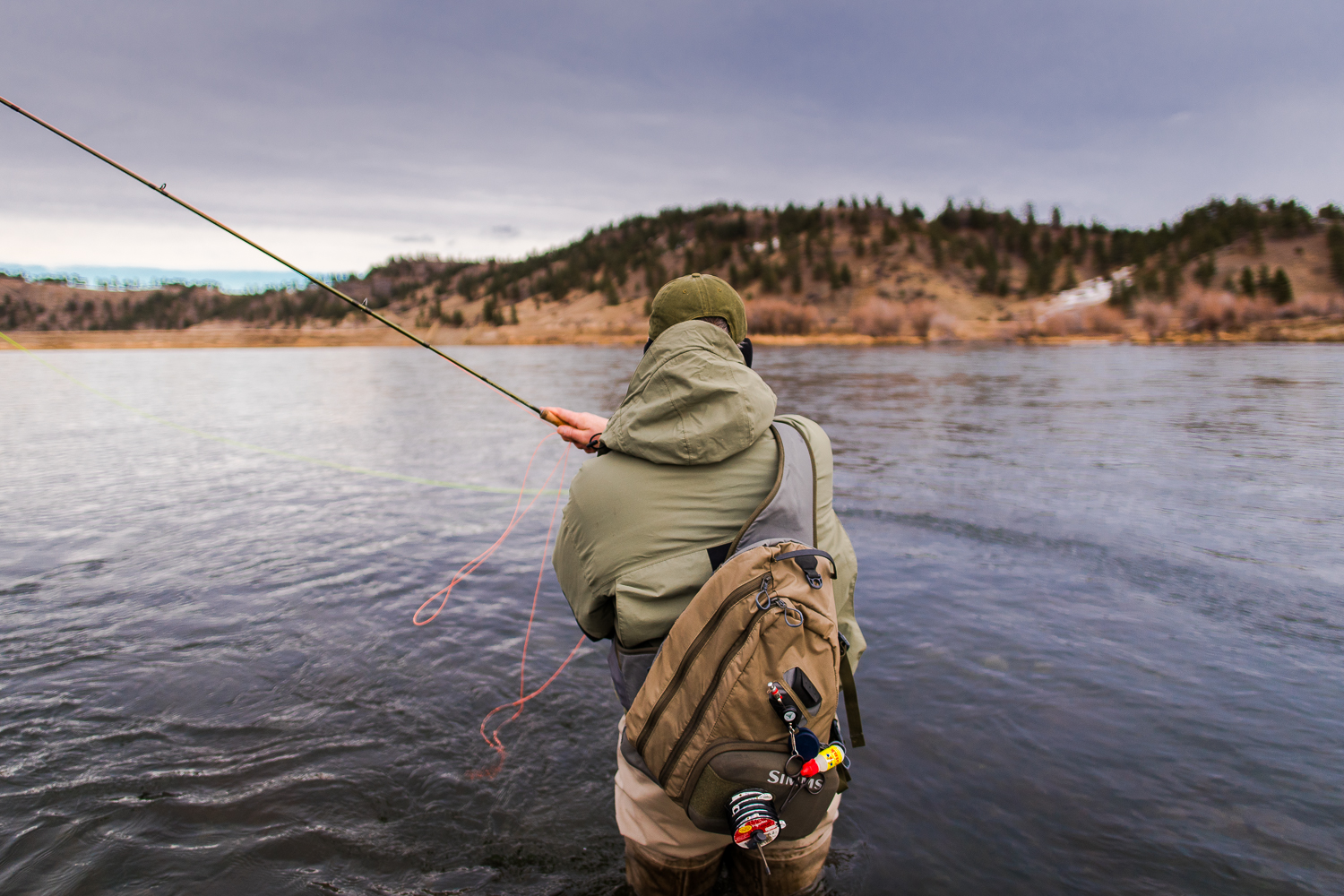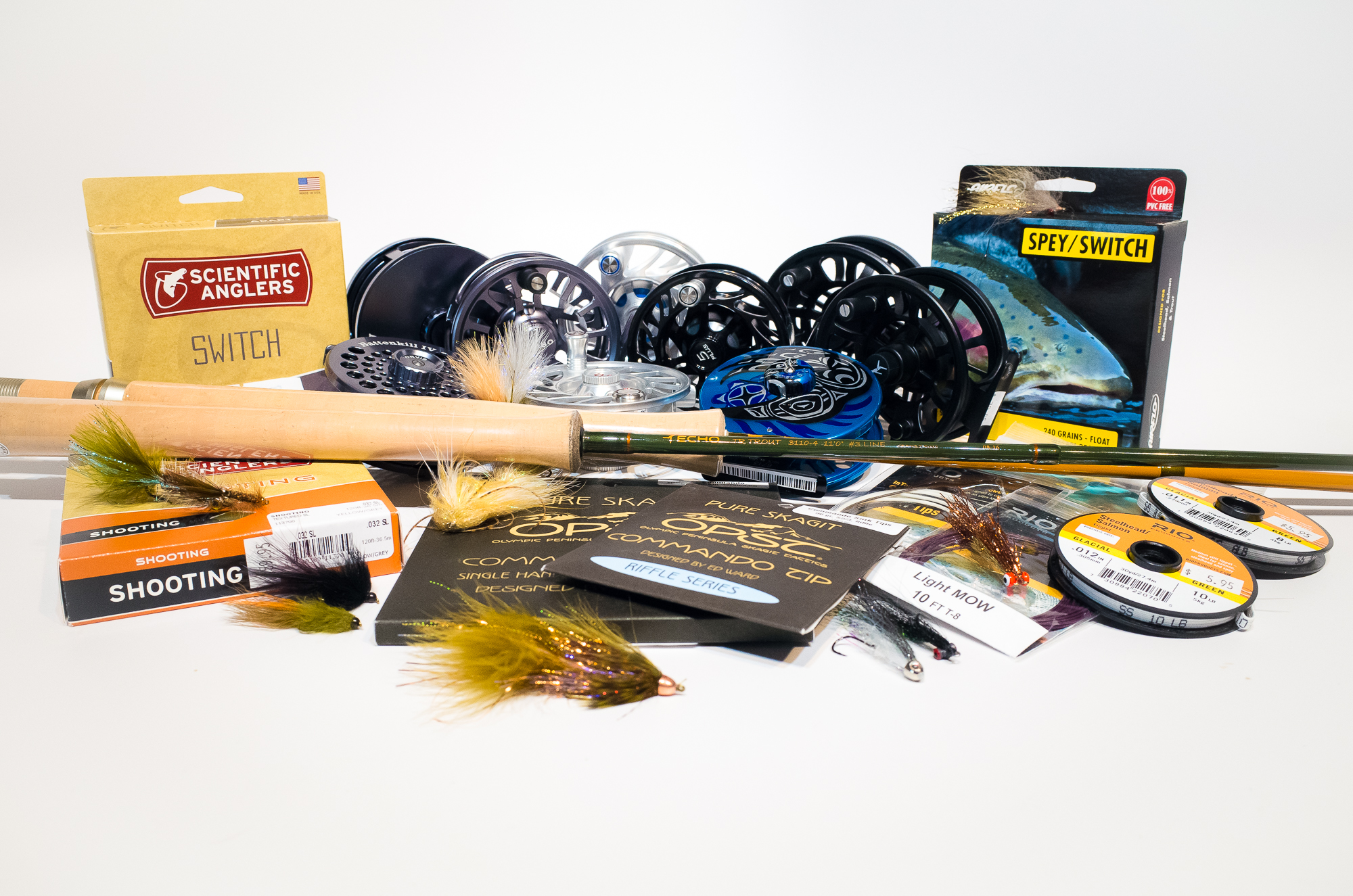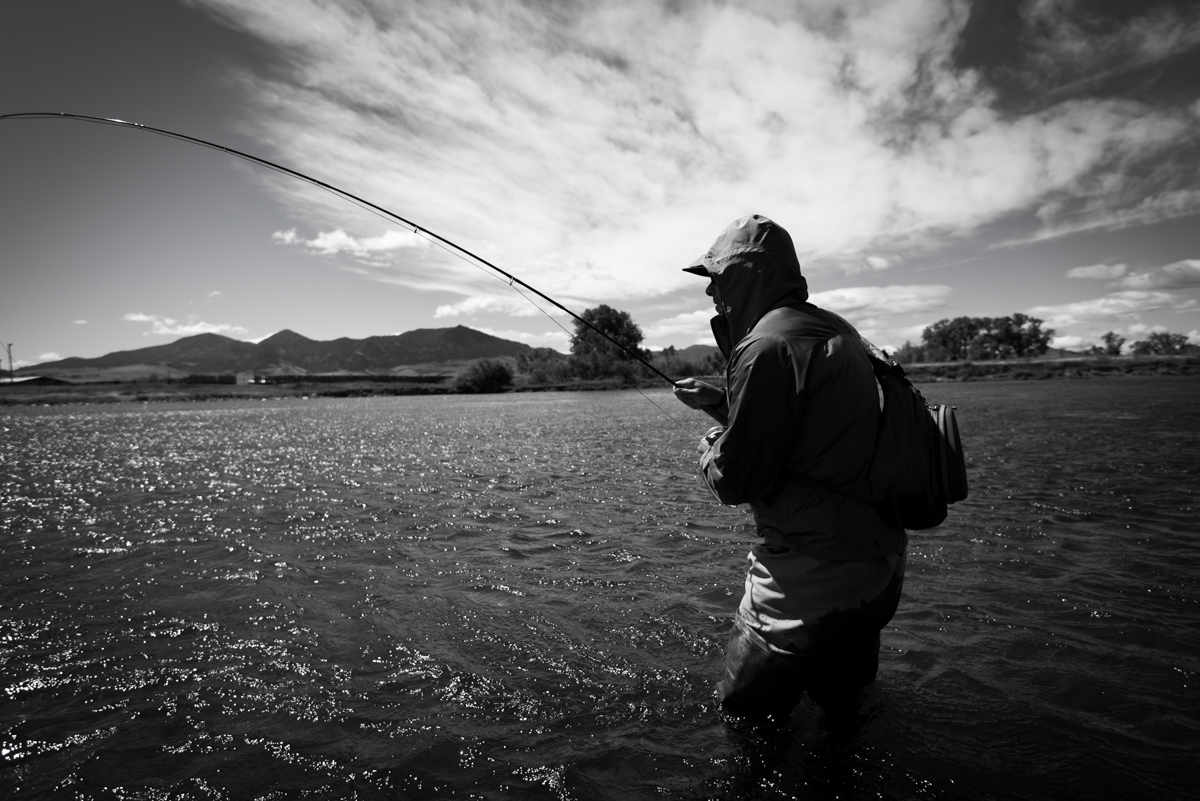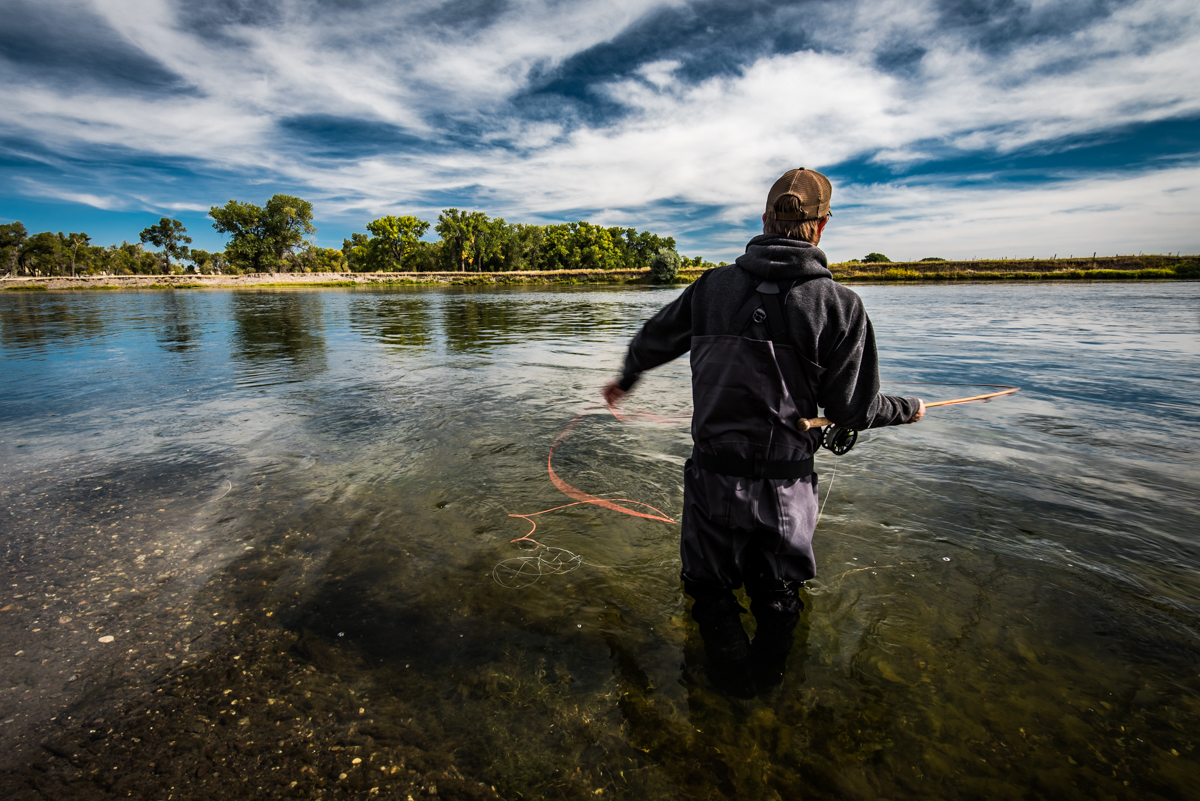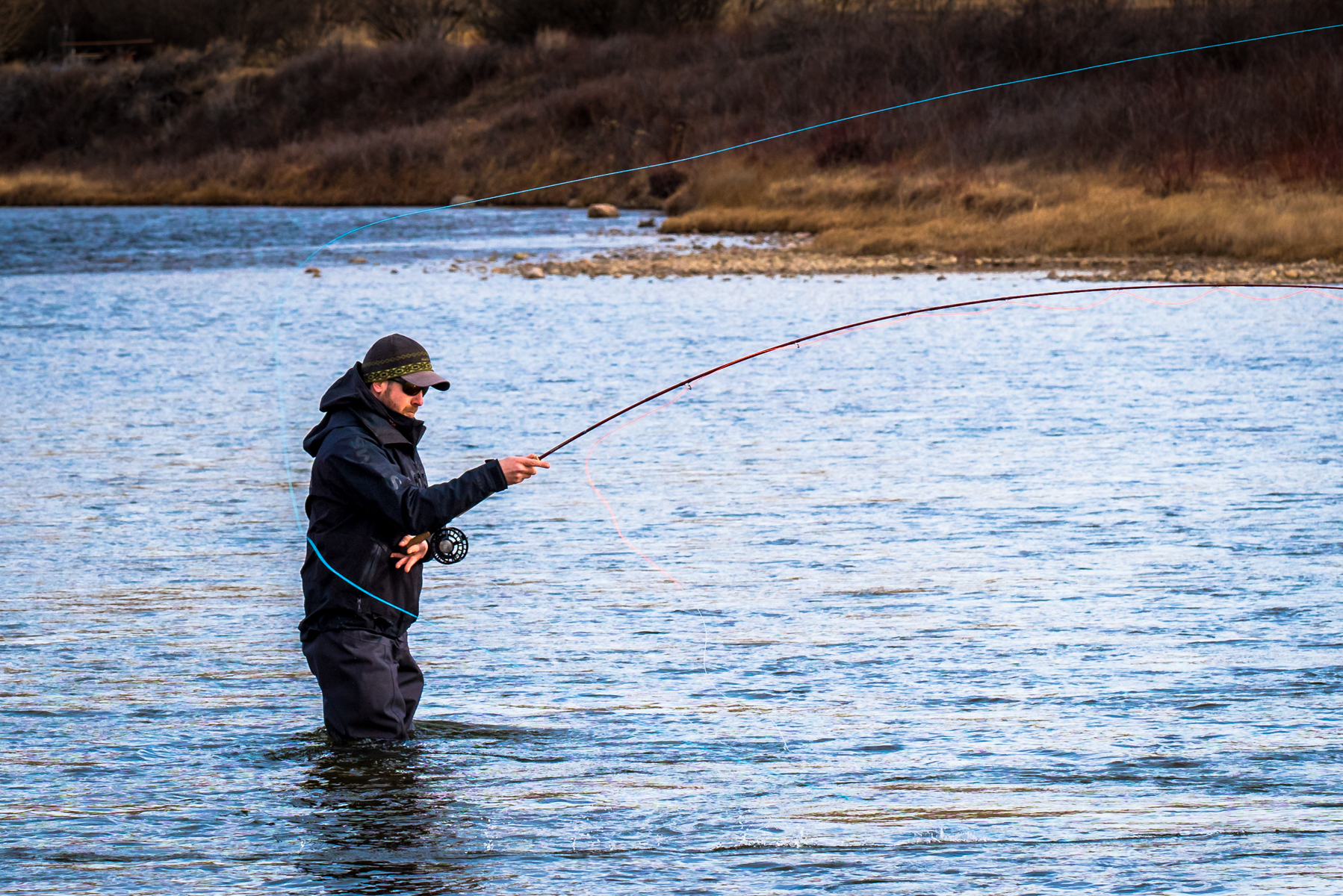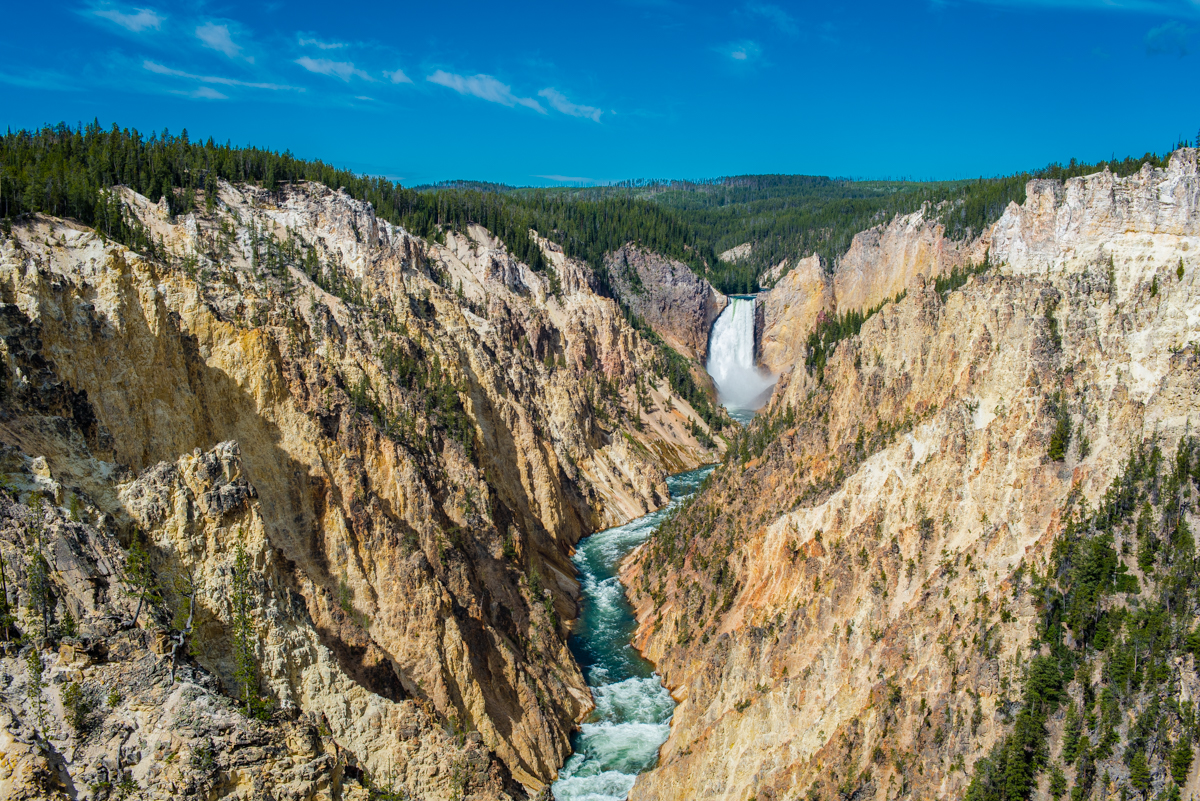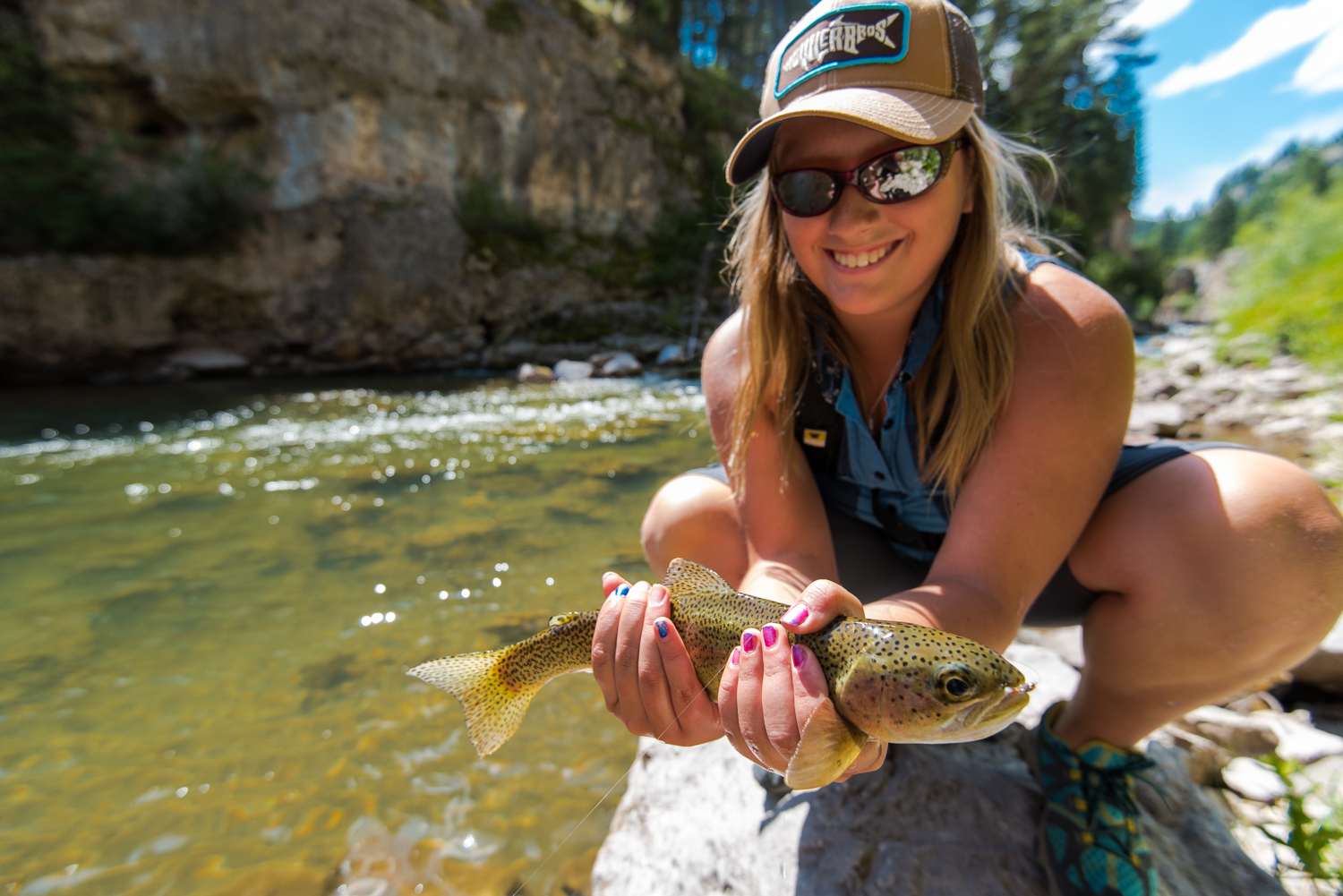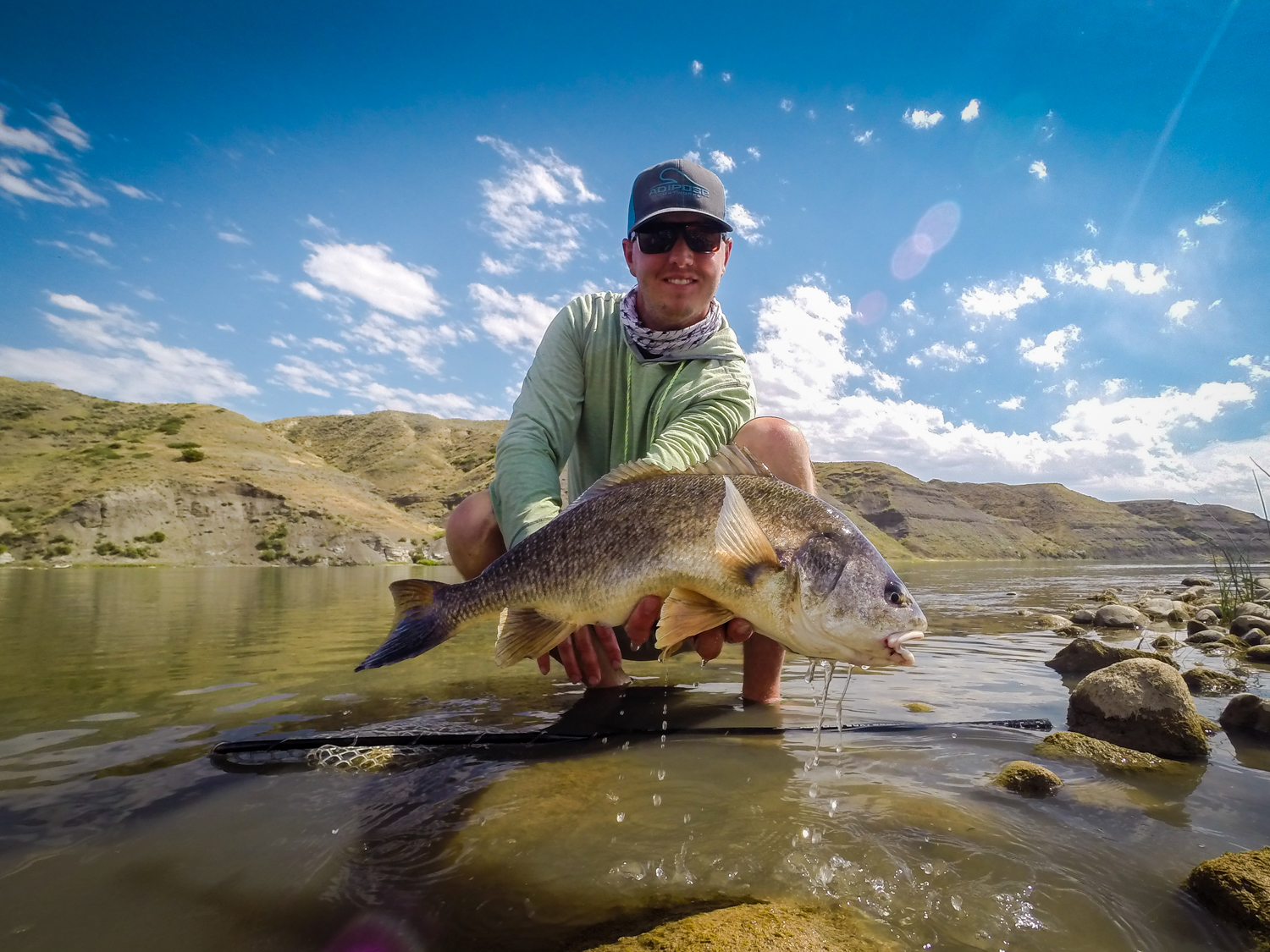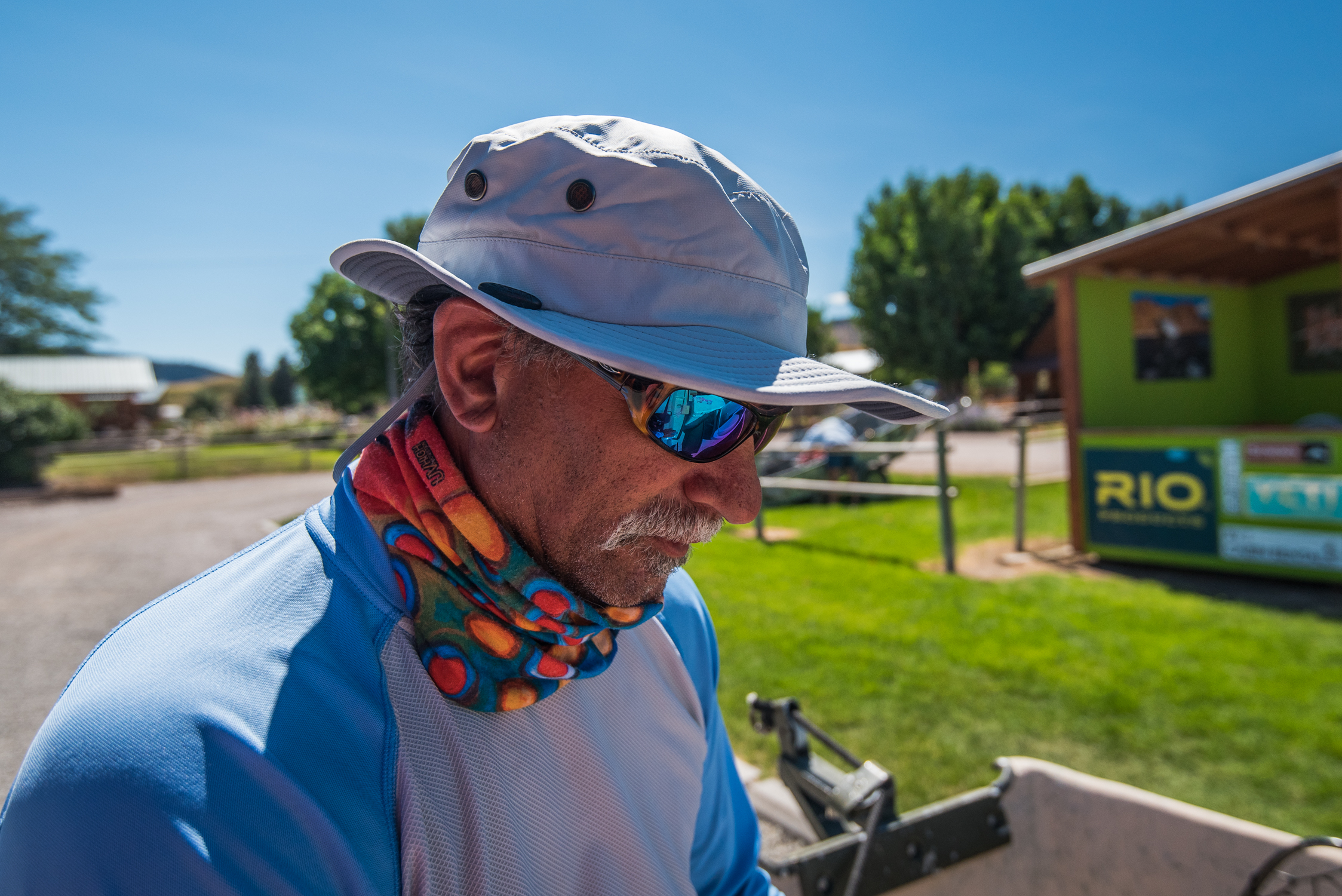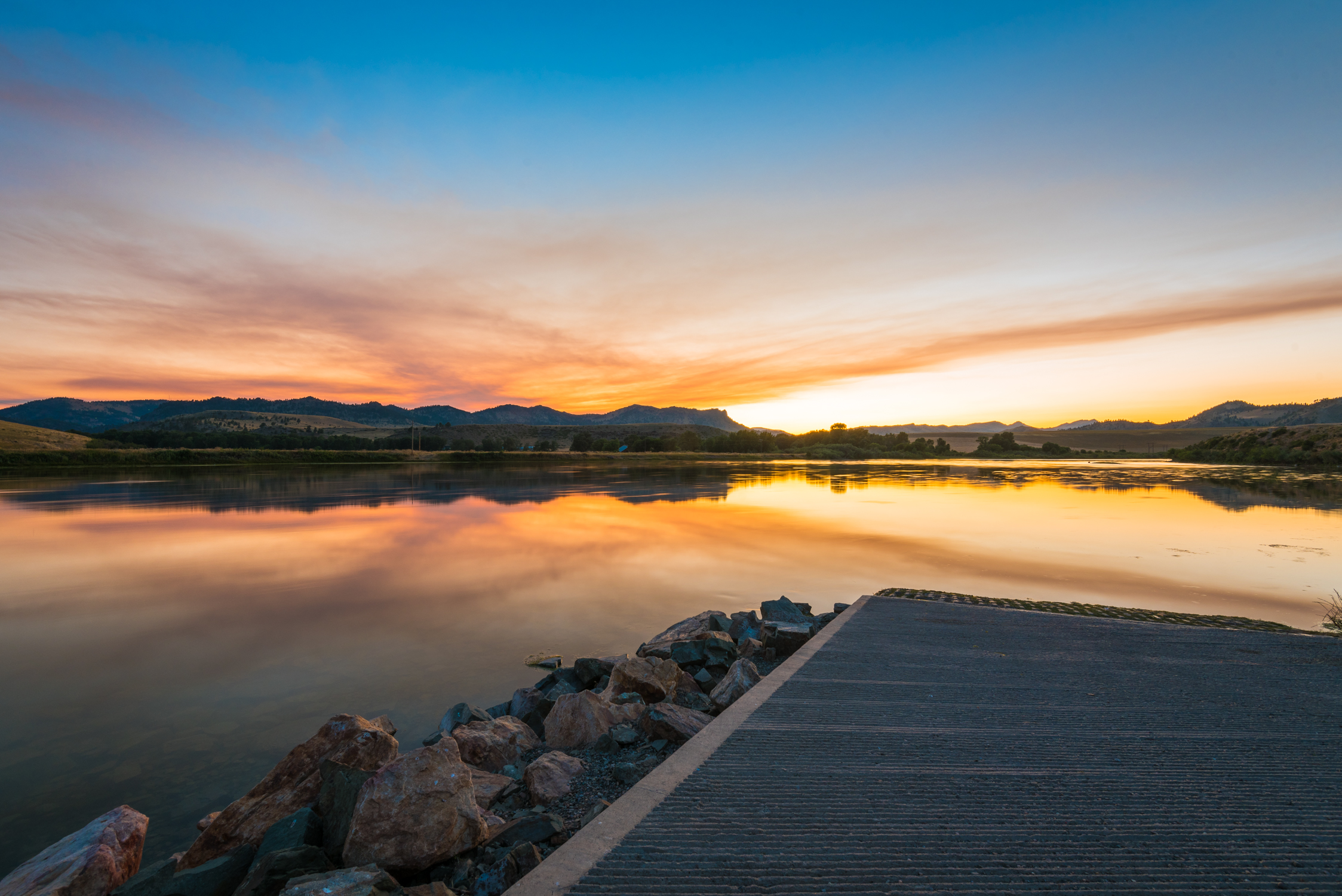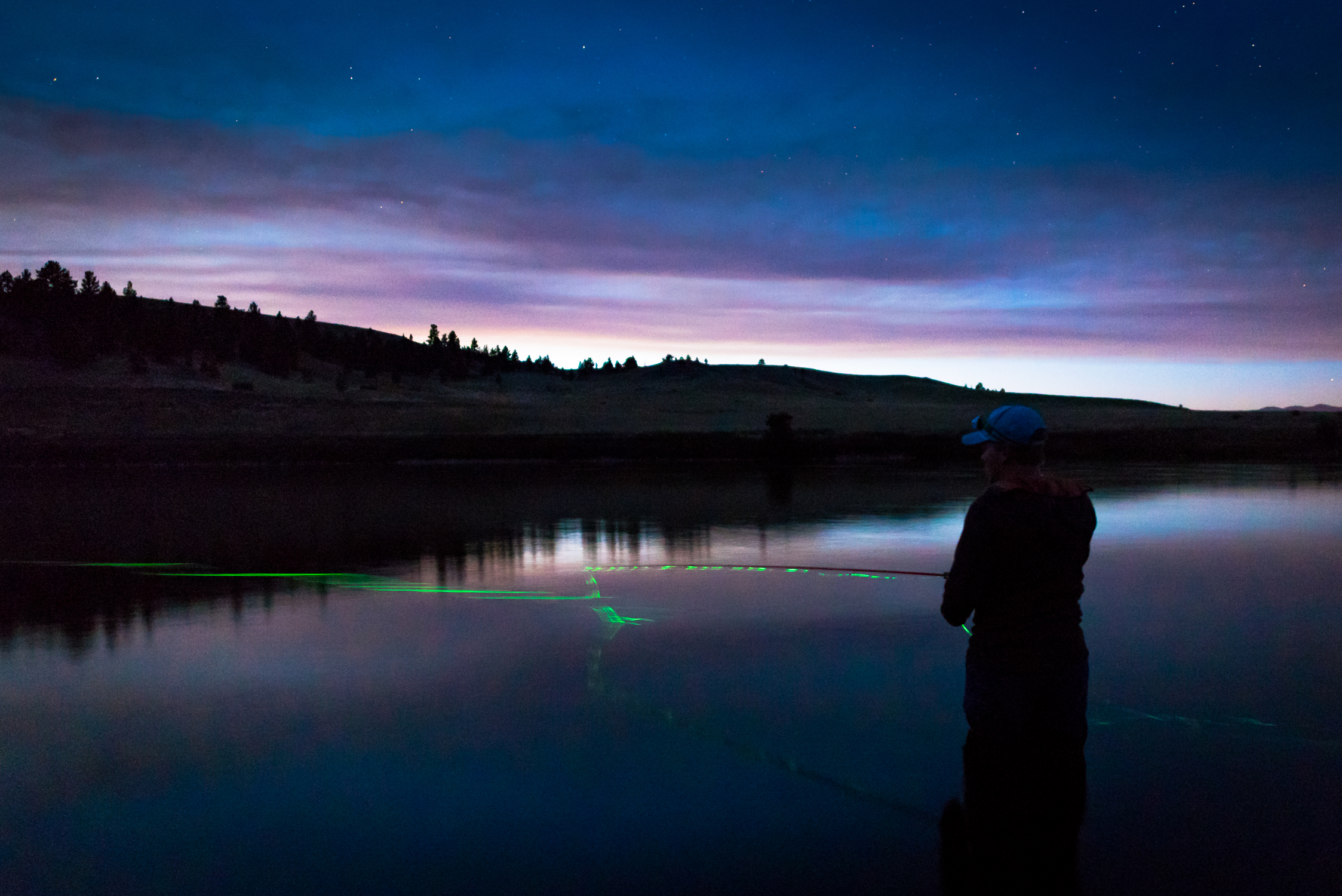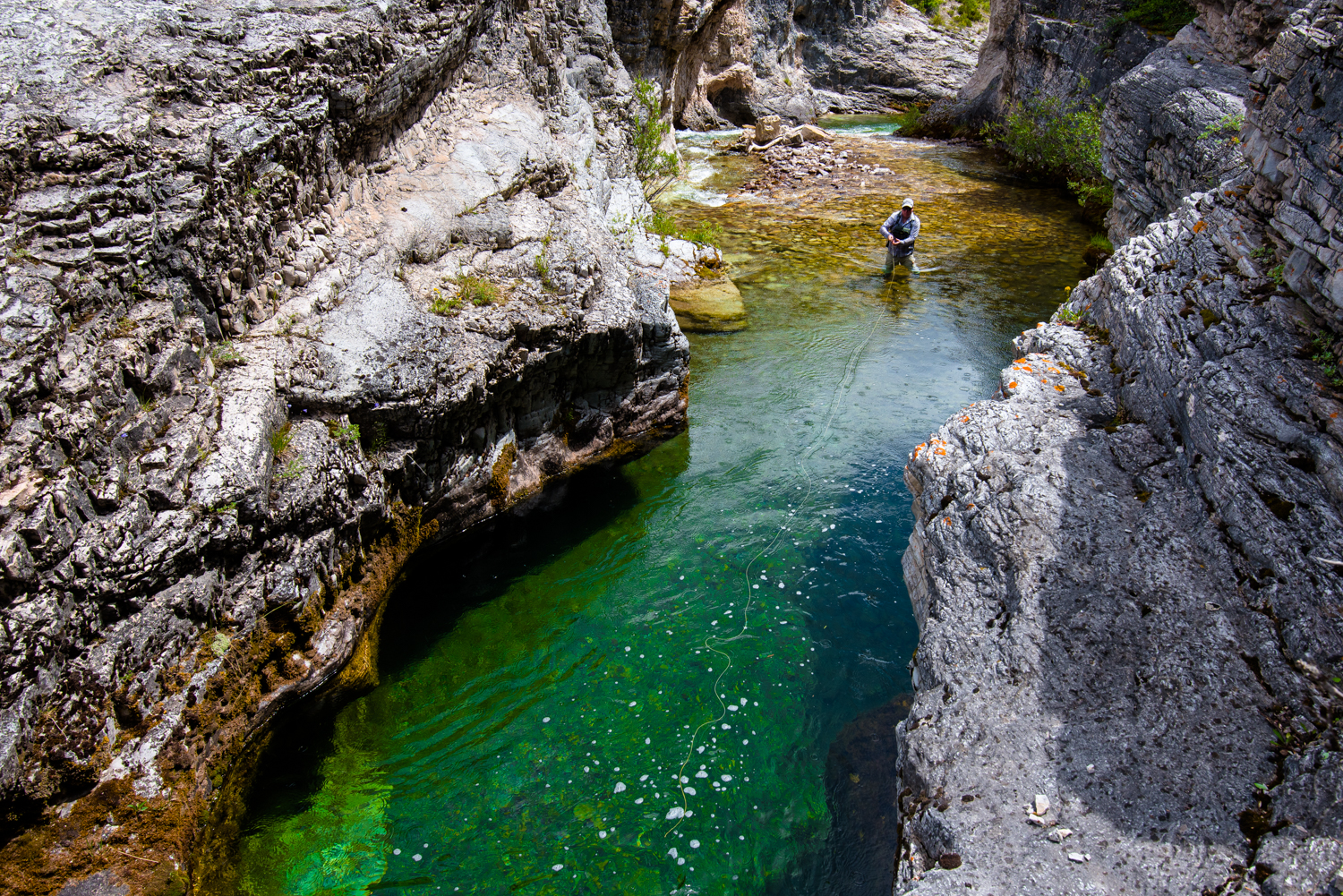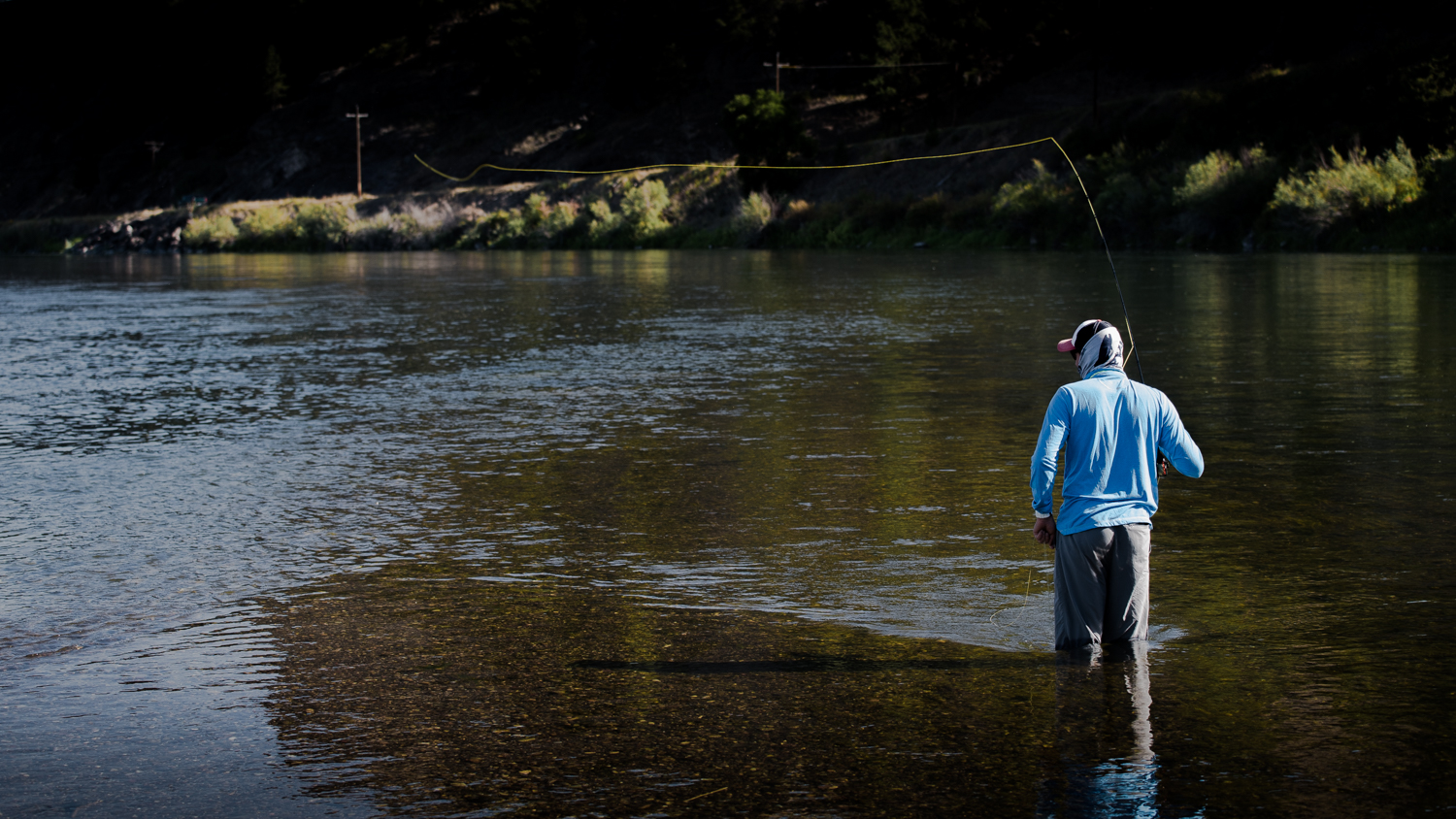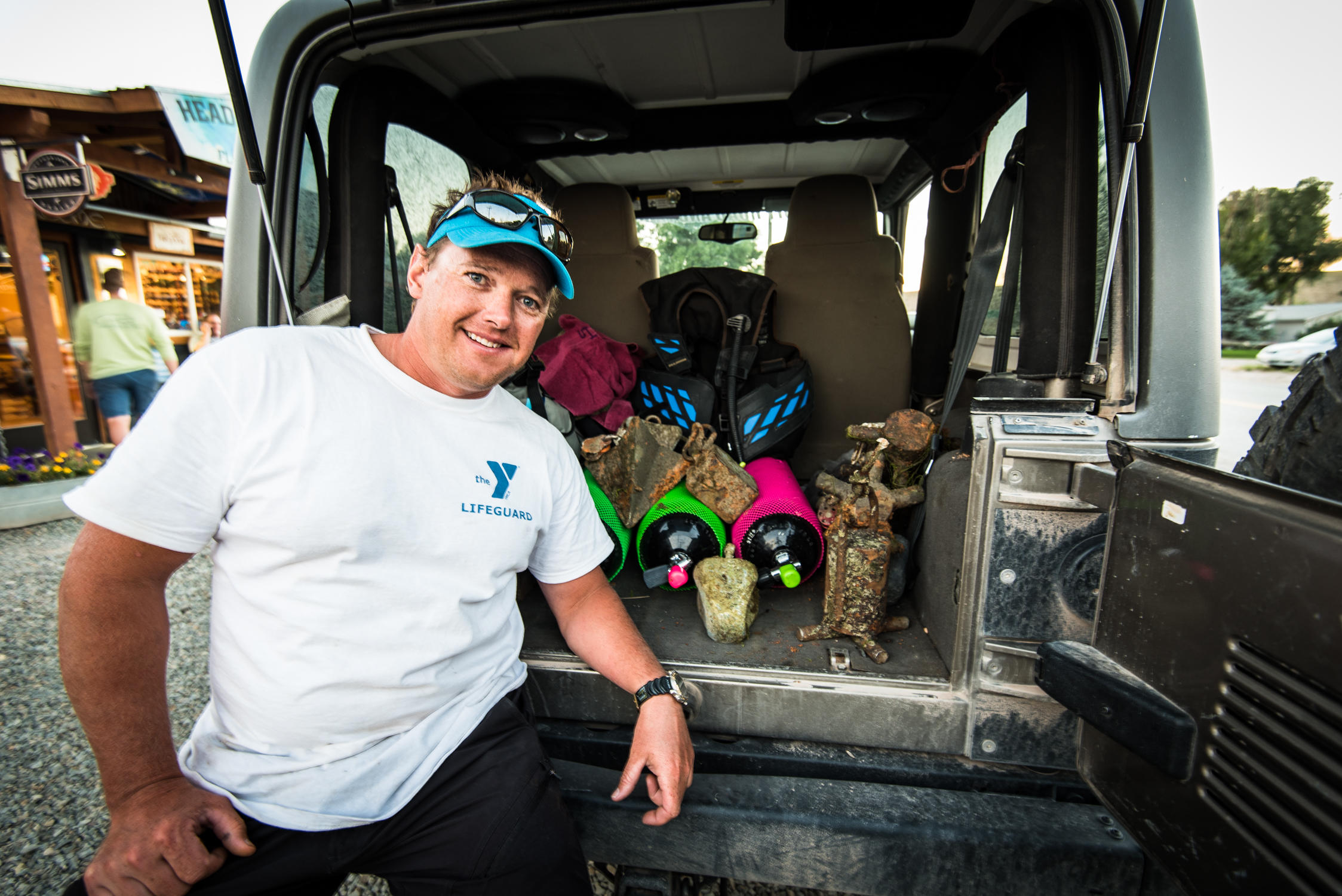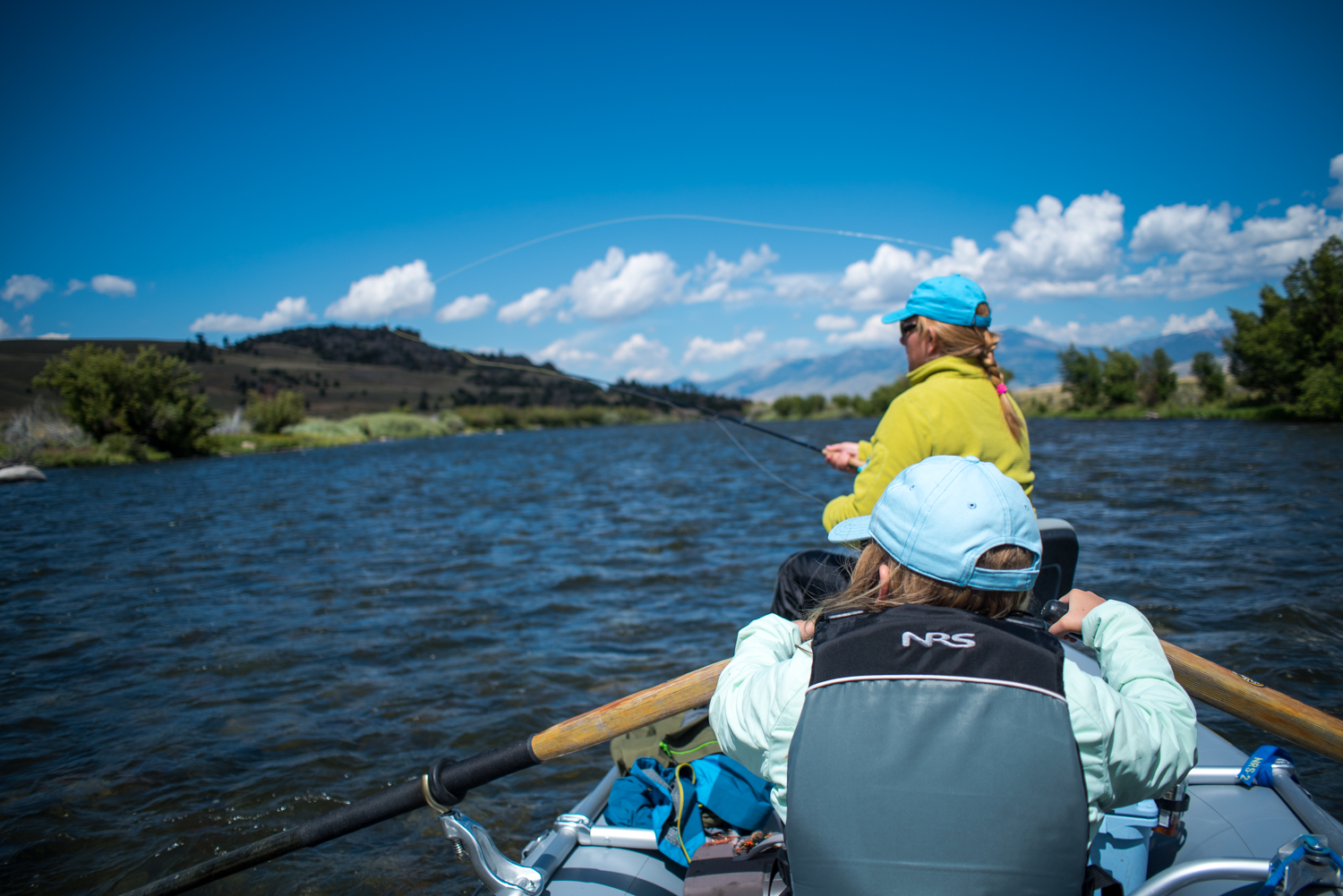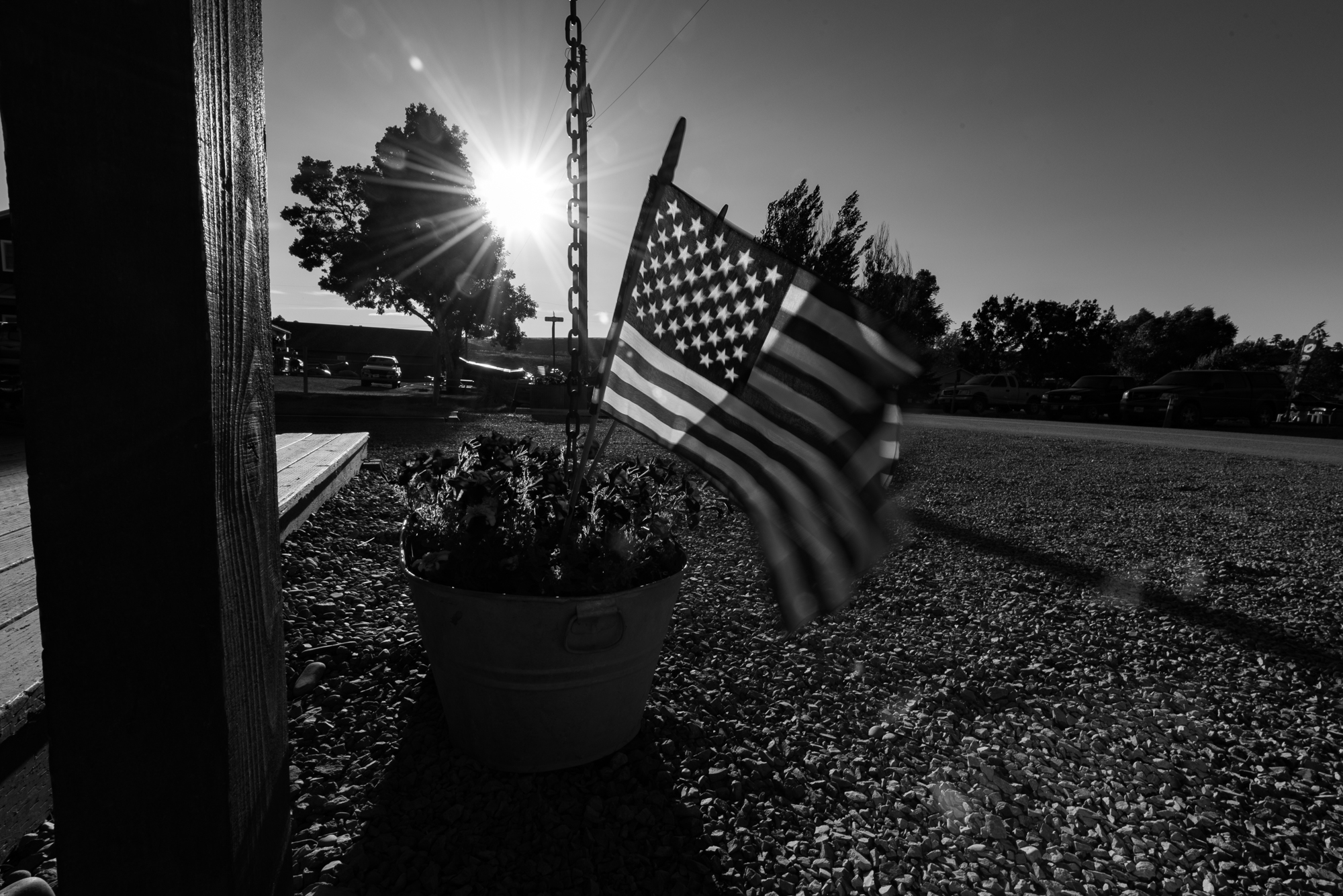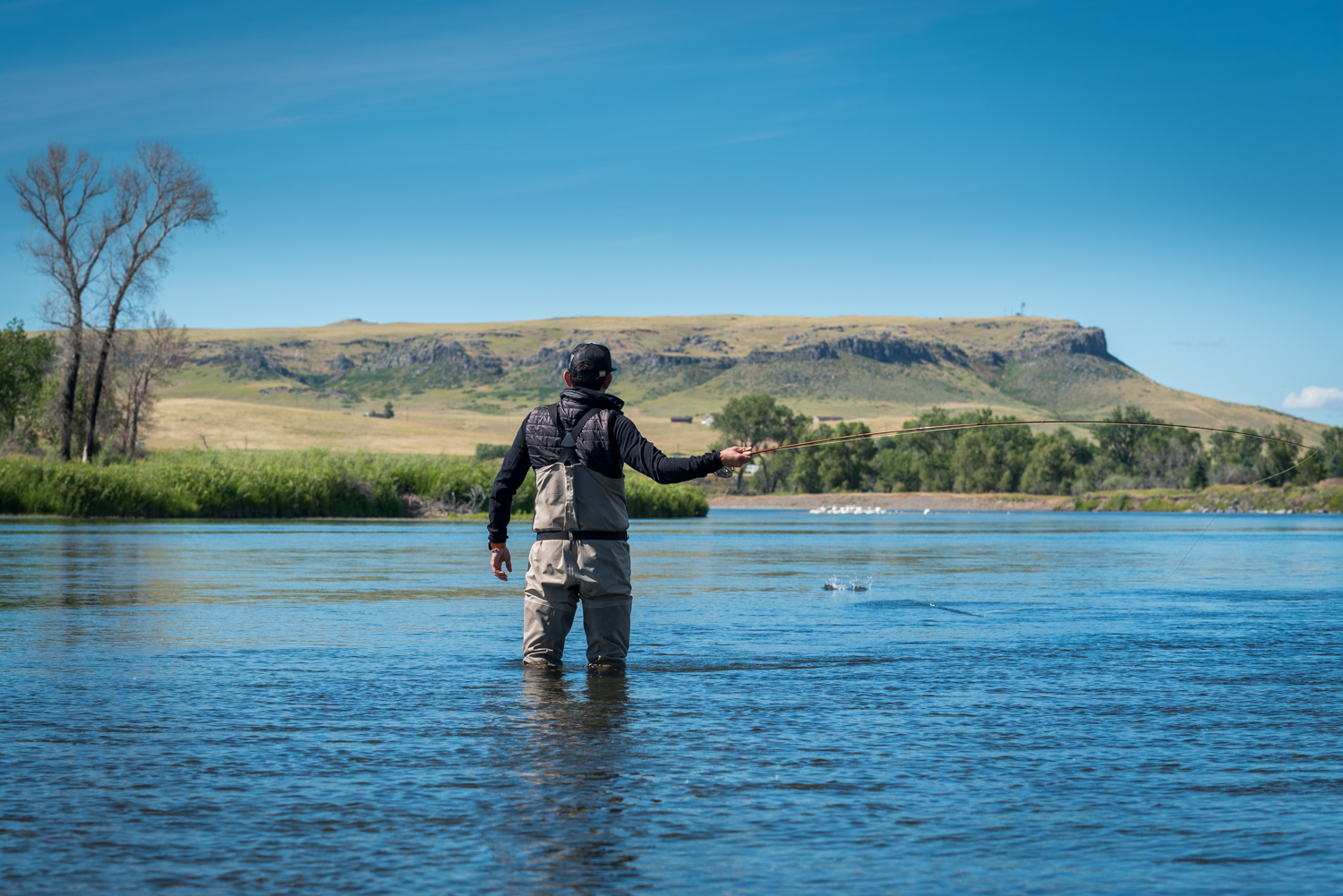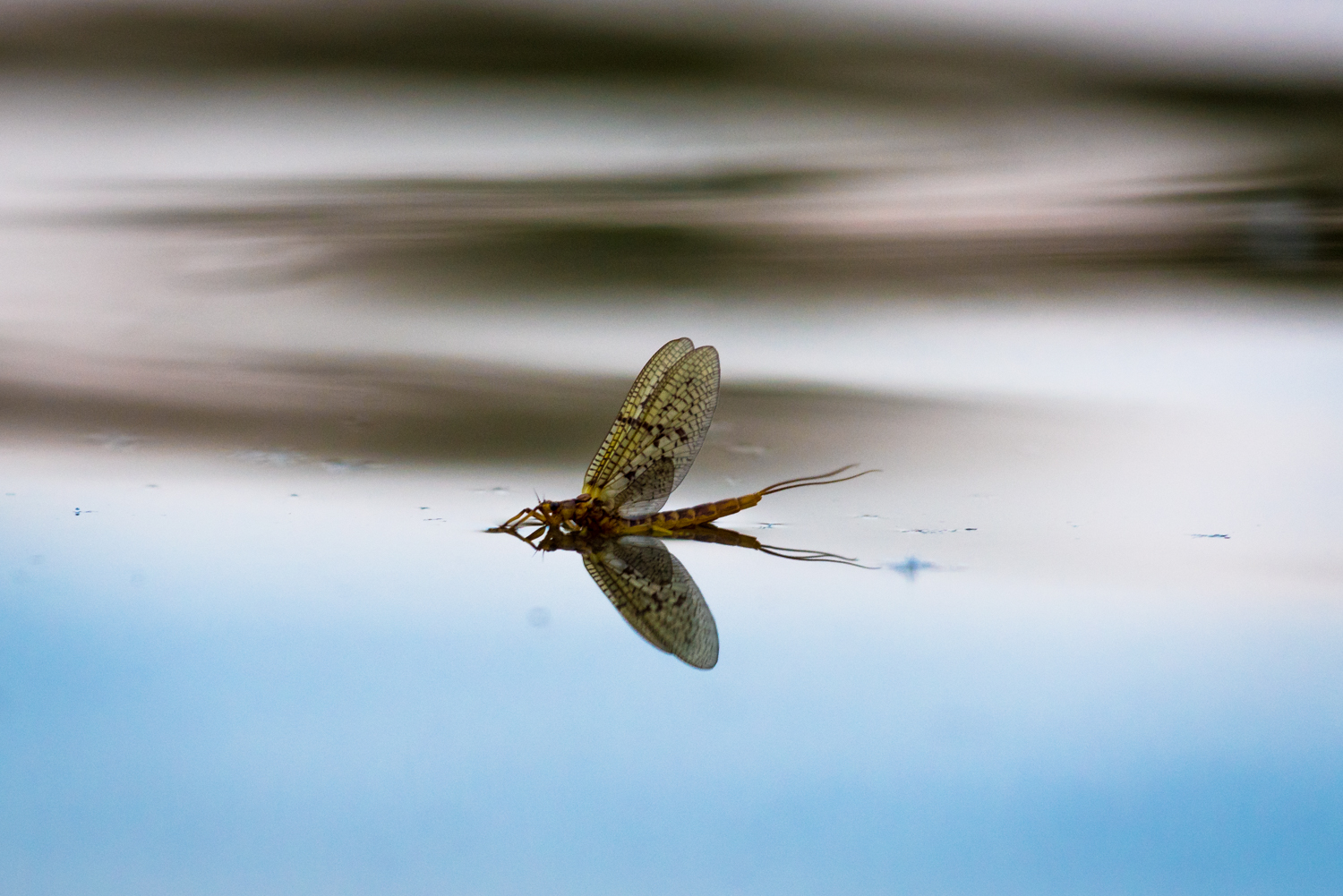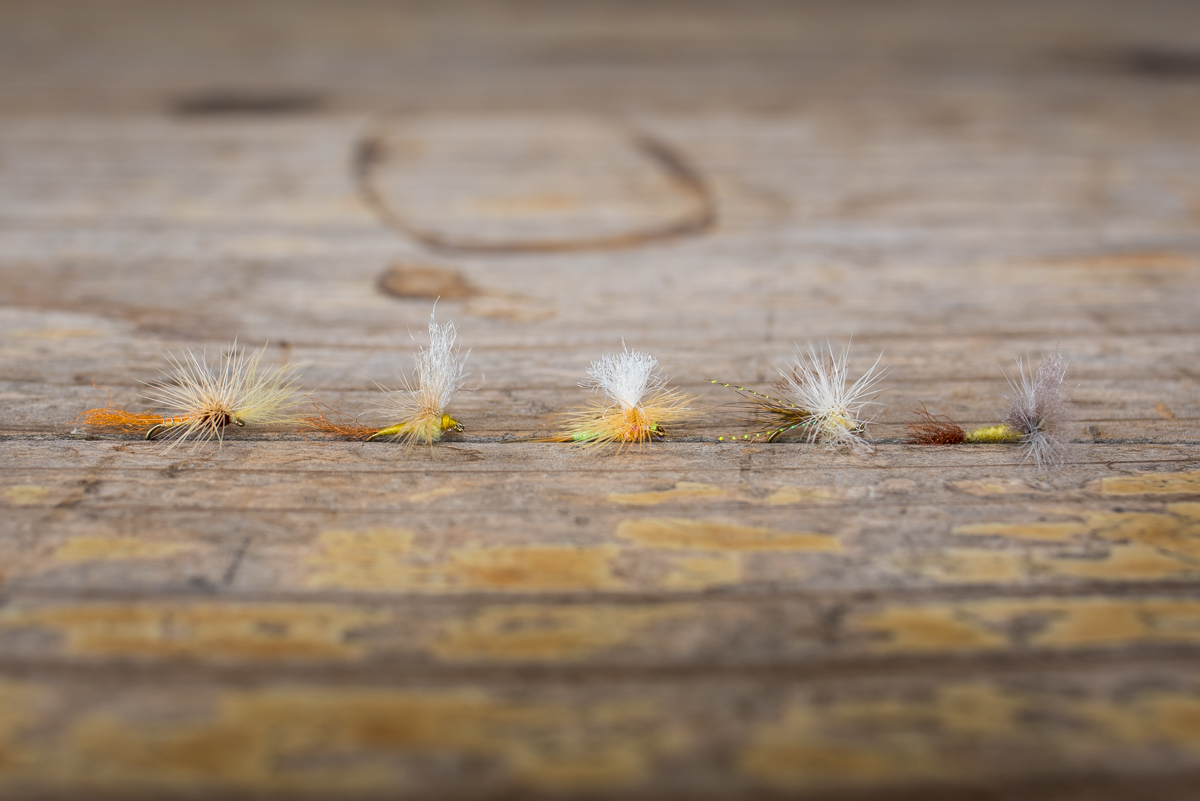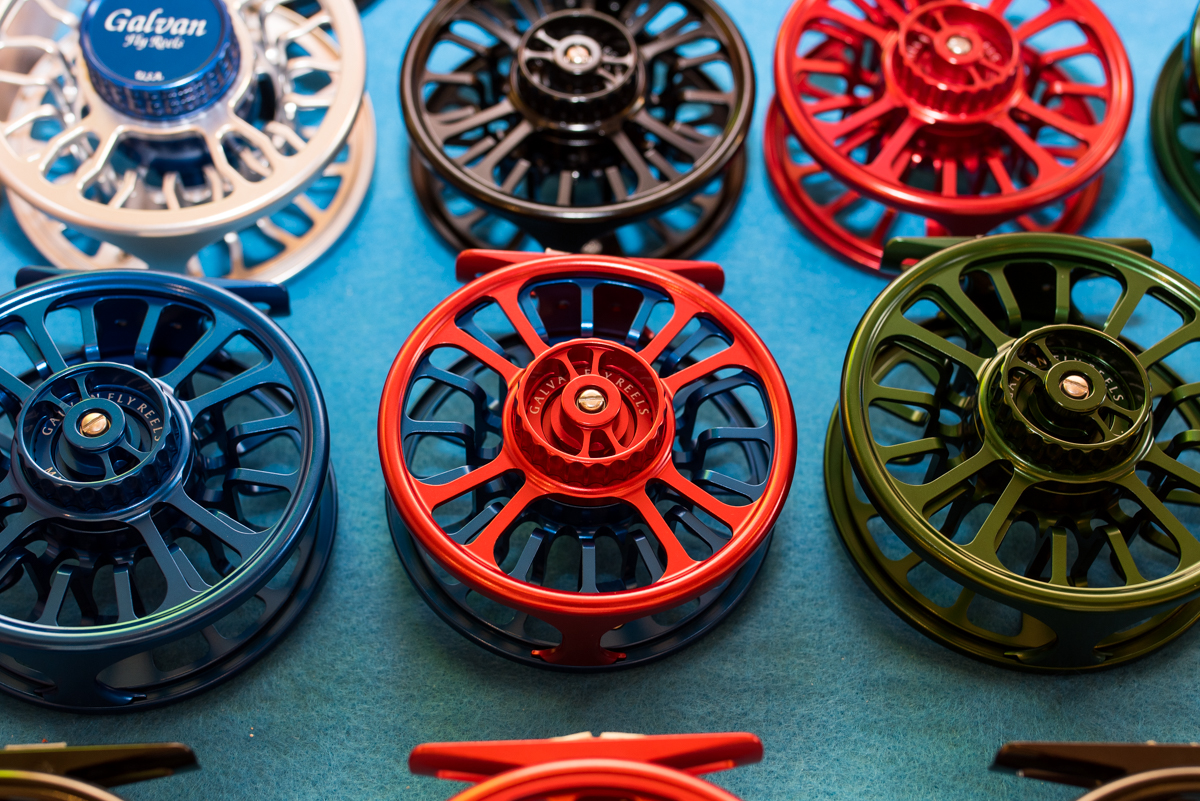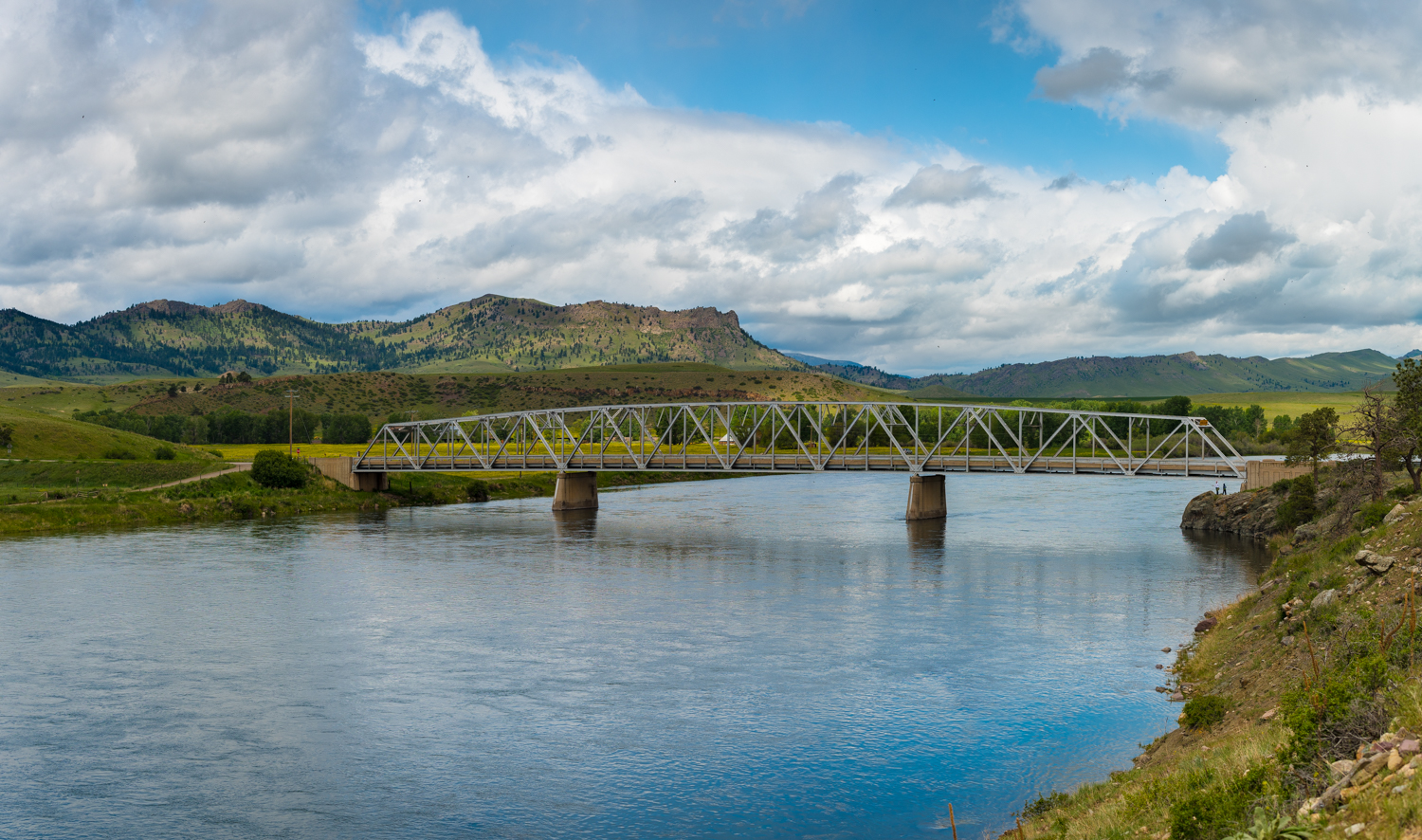[vc_row][vc_column][vc_column_text]The first really cold week is behind us, and some of our visitors got to enjoy some downright cold and wet weather. If you didn’t have all of the right cold weather gear on Monday, you froze. And we definitely had a few clients on the boat who know this (they’ve experienced it before) yet continue to show up to the Missouri River in October with a sweatshirt from gym class and a golf windbreaker.
We thought we’d throw together some of our favorite cold weather gear for fall in Montana. And we’ll definitely be seeing some more cold and wet weather in the next few weeks.[/vc_column_text][us_separator show_line=”1″ line_width=”default”][vc_row_inner][vc_column_inner width=”1/2″][vc_column_text]
#1 RAIN JACKET
While people are often amazed that we’ll be out fishing in sub-zero temperatures in the winter, few realize that it’s actually much colder to be fishing in 50 degree weather with driving rain and a little wind. Thats because 10 below is dry. It’s the wet that makes you cold, so the number one piece of gear to keep you warm is a QUALITY rain jacket. We like Simms, of course, and there’s not a better solution than the legendary Simms Guide Jacket. Gore-tex, a big hood, storm flaps and cuffs that let the water runs off and not in.
But any QUALITY rain jacket will do, including your ski or hunting shell. What doesn’t work well? Minimalist, lightweight hiking rain jackets like the Marmot Precip and Patagonia Torrentshell. These are designed for active sports and lightweight packability, not sitting in a drift boat for hours in a down pour. HINT: These can be awesome under your heavier rain jacket in a two-jacket system.
BUT I’M TOO CHEAP!
Then don’t buy a knockoff of a good rain jacket, or one that advertising a “coating”. They always suck. The cheap solution is to go old school and get yourself a nice yellow rubber rain slicker. The kind that the Skipper and Giligan wore while battling that fierce Typhoon. While it didn’t save them from getting lost in the storm, they did arrive on that island alive. And probably pretty dry. These things do not breath at all, but they do 1 thing and they do it well. They keep water out. We see these in the Florida Keys and Louisiana when we’re fishing in the salt. Remember to always keep the hood up so you don’t hear the giggles…
Here’s one on Amazon for $13.95
100 DEGREE RULE
I was sharing this with some customers the other day, and it’s an easy one to remember. If the combined temperature of the air and water are 100 degrees or less, you’re going to get cold. Now this rule relates to submersion in water and hypothermia, but it gives you a good starting point for determining how much and what kind of gear to wear for a day on the water. In other words, if it’s pouring rain and 46 degrees (we’ll assume the air and rainwater are close to the same temperature) and the river temperature is 52 degrees (you’re going to be getting your hands, face and neck wet) then we’re approximately 46 + 52 = 98 degrees. It’s going to be cold, and definitely not a day to get your legs wet wearing shorts or lightweight pants. And if you or your buddy slip and fall in, you need to get warm quick.
BRING IT WITH YOU
And please bring it. I can’t count how many time I’ve heard “I have one of those killer Simms Rain jackets, but it’s at home…”. Also, take care of it, wash it periodically and use revives on it if it start to “wet-out” and leak.[/vc_column_text][/vc_column_inner][vc_column_inner width=”1/2″][us_image image=”20224″ align=”center”][us_image image=”20227″ align=”center”][/vc_column_inner][/vc_row_inner][/vc_column][/vc_row][vc_row][vc_column][us_separator show_line=”1″ line_width=”default”][vc_row_inner][vc_column_inner width=”1/2″][vc_column_text]
#2 GLOVES
Mark routinely carries 3 to 7 pairs of gloves in his boat. Kinda like OJ. Different gloves for different purposes. And while many are on the never ending quest to find the perfect fishing gloves (we don’t think they exist), we think it’s much more important to keep your hands warm than worrying about how well you can tie a loop knot with them on. We find that Kast makes the best fishing glove on the market. Super comfortable, super warm and incredibly waterproof. Also, the fit is perfect on just about everyone (fingers are not too long or two short). Yes you can fish with them on and even record with them if you have a good game camera, but it depends on what you’re doing. I’ll wear them all day when swinging a two hander. I’ll use them when streamer fishing from the boat as well, but probably not all day. Nymph fishing requires too much stripping with no tension to feel, So instead of taking them off I just don’t nymph. And for whatever reason I can’t comprehend throwing dries with gloves on.
But when you do dunk your hands to release a fish, they stay dry, and the cuffs keep water our all day long. By far the best solution we’ve found and we sell a truckload of them each year.
CHOPPERS
Many of us carry some Minnesota style Choppers in the boat. These aren’t for fishing with unless you’re beating salmon on the head with a baseball bat. These are for warming your hands back. They work great by themselves with the sole liner gloves which can be worn by themselves. They work even better, however, with some hand warmers inside. They tough as hell and cheap. Look for them at ACE or your local hardware store.
An old hockey player I knew from Duluth showed these to me years ago. He advised that while they are terrible in a snowball fight, they are fantastic in a fist fight. FYI…[/vc_column_text][/vc_column_inner][vc_column_inner width=”1/2″][us_image image=”20226″ align=”center”][us_image image=”20220″ align=”center”][/vc_column_inner][/vc_row_inner][/vc_column][/vc_row][vc_row][vc_column][us_separator show_line=”1″ line_width=”default”][vc_row_inner][vc_column_inner width=”1/2″][vc_column_text]
#3 DISPOSABLE HANDWARMERS
These are easy to forget, which is lame because they are cheap and you can buy them everywhere. And most fly shops carry them. Mark and I have been known to pass them out for free on days when we know it’s going to be arctic. I always keep a few in my boat and in my gear bag. Remember to open them up inside your car or at the shop when you buy them. Give them a chance to good and warn before you take them into battle. I usually keep 1 in each pocket of my rain jacket to warm my hands up in between sips of Redbreast (see below).
And these can also be used in your wader feet as well. Put them on top of your foot when you slide into the stocking feet. Money.[/vc_column_text][/vc_column_inner][vc_column_inner width=”1/2″][us_image image=”20225″ size=”medium” align=”center”][/vc_column_inner][/vc_row_inner][us_separator show_line=”1″ line_width=”default”][/vc_column][/vc_row][vc_row][vc_column width=”1/2″][vc_column_text]
#4 BOOTFOOT WADERS
Yes, they are expensive, and it’s often difficult to get the Simms model (which is the best by miles), but they are a total game-changer for those who fish where or when it’s often chilly. You will completely forget that your feet ever got cold while fishing. An added bonus is that they are easy on and off, which is great at the end of a cold day. You can also easily use the above hand-warmers in them, and they do make a “toe-warmer” model as well. We can’t recommend these enough.[/vc_column_text][/vc_column][vc_column width=”1/2″][us_image image=”20223″ size=”medium” align=”center”][/vc_column][/vc_row][vc_row][vc_column][us_separator show_line=”1″ line_width=”default”][vc_row_inner][vc_column_inner width=”1/2″][vc_column_text]
#5 PUFFBALL
Patagonia coined that term years ago, and like “Coke”, they’re all called that. Simms makes a great one, and I prefer the North Face version, but the bottom line is that they all have similar properties. They are very light, exceedingly warm, dry quickly and work when wet. That last one is huge for fly fisherman and women, as we are constantly putting our hands in the water to release fish. We also have our casting hand in the up position all day, which lets water run down our arm. And if you’re on a multi-day float trip, you’ll love in one. We like the lightweight versions and use them as layering garments under our rain jackets. Number 5 on the list, but a must-have. No really cheap way to do this – the cheeps usually suck – but you can often find good deals on last years colors or even buy a used one on eBay.
[/vc_column_text][/vc_column_inner][vc_column_inner width=”1/2″][us_image image=”20219″ size=”medium” align=”center”][/vc_column_inner][/vc_row_inner][/vc_column][/vc_row][vc_row][vc_column][us_separator show_line=”1″ line_width=”default”][/vc_column][/vc_row][vc_row][vc_column width=”1/2″][vc_column_text]
#6 CAMPBELLS SOUP
If I could only bring 1 thing to eat ro drink on a chilly day, it would be Redbreast Irish Whiskey (see below). If I could bring 2, it would be Redbreast and a hot thermos full of Campbells Chicken Noodle or Chicken and Rice Soup. This has save countless days for me, and warms you up much better than coffee, cocoa or tea. You also get some lunch with the deal, and it will taste much better than that soggy sandwich full of cold-cuts. Make sure and use a little more water than called for, and “season” your thermos with a little hot water before you toss the soup in. Also, I highly recommend sticking with the cheap, regular old Campbells, and avoid anything that has the words “healthy” or “low-sodium” on the can. Your body wants that fat, salt and grease when it’s cold, and I’ve found that the allegedly “healthy” variants cool off much quicker. Also – NEVER use dried potato soup, unless you want to watch it explode all over your buddy.[/vc_column_text][/vc_column][vc_column width=”1/2″][us_image image=”20222″ size=”medium” align=”center”][/vc_column][/vc_row][vc_row][vc_column][us_separator show_line=”1″ line_width=”default”][vc_row_inner][vc_column_inner width=”1/2″][vc_column_text]
#7 REDBREAST IRISH WHISKEY
Popularized on the Missouri River by legendary Fly fisherman and Naval Aviator “Lieutenant Dan” Kaufmann, Redbreast is a wonderful premium Irish whisky smooth enough for your LDS buddy. We like it from below zero up to about 50 degrees. If the air temperature goes above 50, we put it on ice in the cooler and play it by ear from then on.[/vc_column_text][/vc_column_inner][vc_column_inner width=”1/2″][us_image image=”20228″ size=”medium” align=”center”][/vc_column_inner][/vc_row_inner][us_separator show_line=”1″ line_width=”default”][vc_row_inner][vc_column_inner width=”1/2″][vc_column_text]
#8 MR BUDDY HEATER
I’m actually not a fan of propane heaters in the boat, or propane anything for that matter. But a lot of people carry these in the drift boat, and they are almost a fixture in Winter Steelhead country. I find they work best when your hand is close enough to get burned on the white hot steel grate in front of the burner. From there on out to about 1 inch they provide a nice warning effect. After that I get just as warm putting my hand in the cooler to get the battle of Redbreast.[/vc_column_text][/vc_column_inner][vc_column_inner width=”1/2″][us_image image=”20231″ size=”medium” align=”center”][/vc_column_inner][/vc_row_inner][/vc_column][/vc_row][vc_row][vc_column][us_separator show_line=”1″ line_width=”default”][/vc_column][/vc_row][vc_row][vc_column width=”1/2″][vc_column_text]
#9 BUILD A FIRE
I don’t do this enough, and honestly I have mixed feelings about leaving fire-rings and dead coals on the beach in the Missouri River Wilderness. But when you really need to warm up, nothing ticks all the boxes like a good bonfire. Part mental, part physical. The Missouri River has lots of excellent sand/gravel beaches to build a fire on, especially during low winter flows. Bring a few pieces of your own wood, and do the right thing before leaving. Make sure the fire is completely out and scatter the ashes.[/vc_column_text][/vc_column][vc_column width=”1/2″][us_image image=”20221″ size=”medium” align=”center”][/vc_column][/vc_row][vc_row][vc_column][us_separator show_line=”1″ line_width=”default”][vc_row_inner][vc_column_inner width=”1/2″][vc_column_text]
#10 WEAR A HAT
“Don’t go outside without your hat on!” – mom
you know this one…[/vc_column_text][/vc_column_inner][vc_column_inner width=”1/2″][us_image image=”20218″ size=”medium” align=”center”][/vc_column_inner][/vc_row_inner][/vc_column][/vc_row]
